


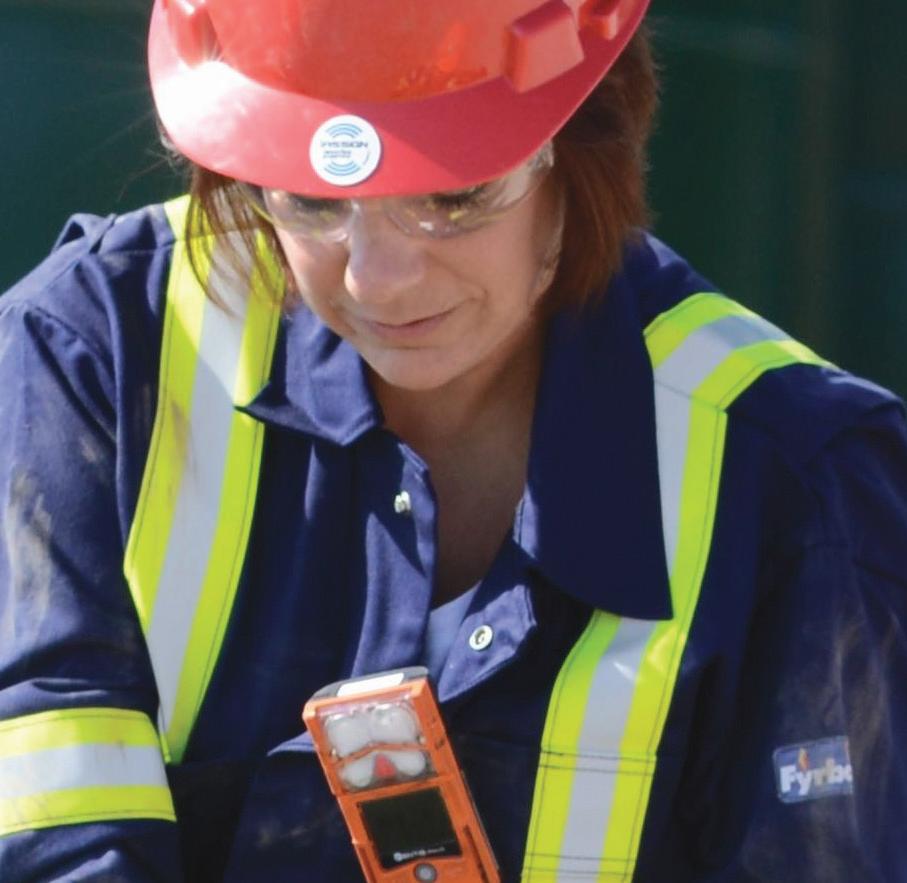



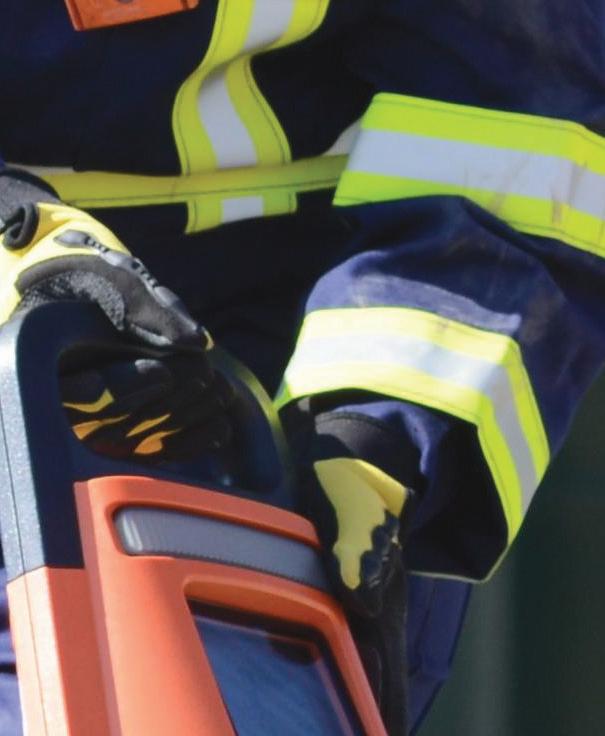

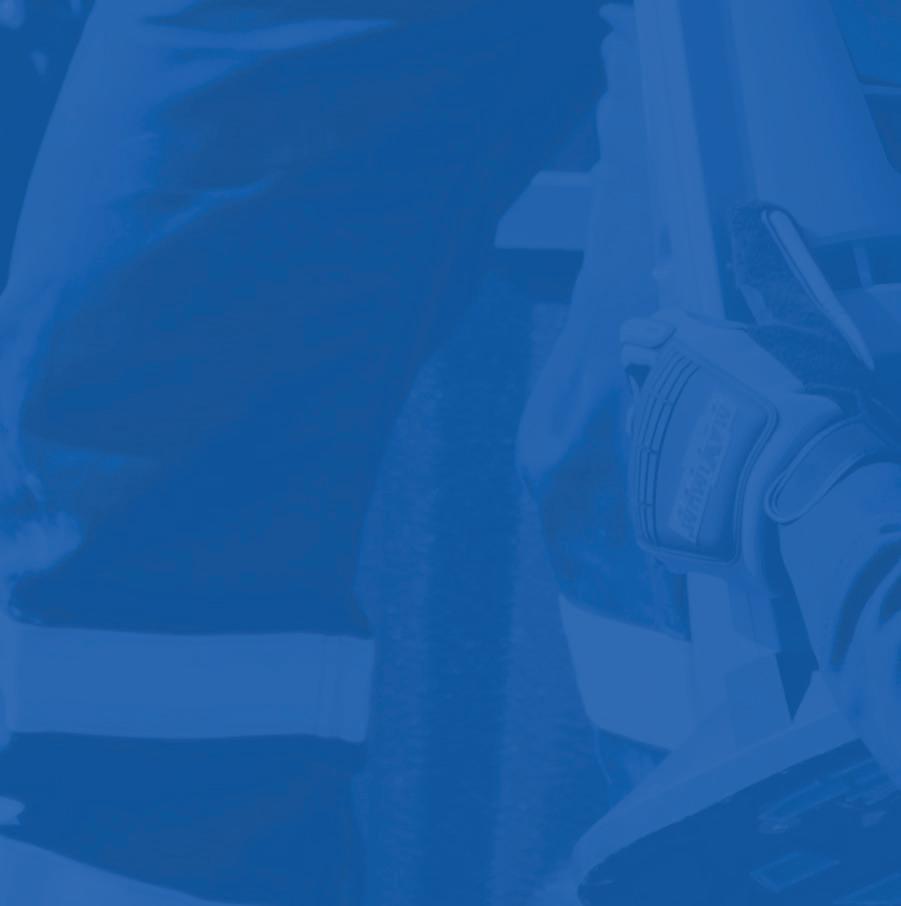

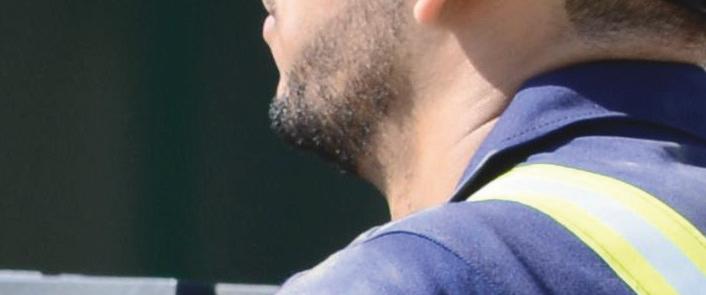













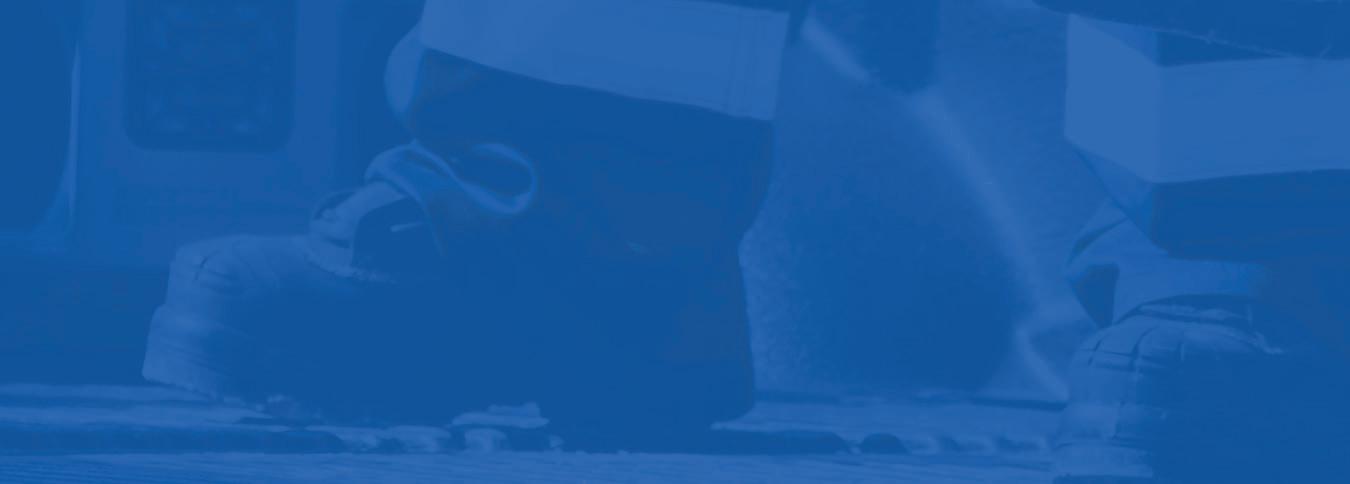


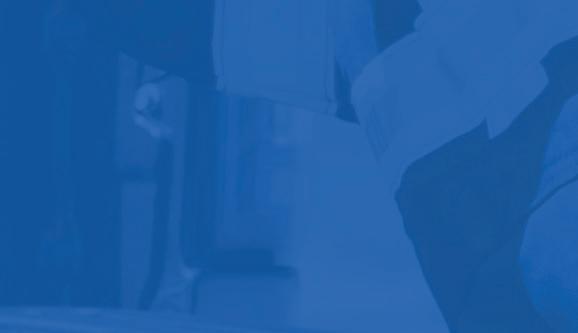






14
Cover Story
EHS and ESG: Navigating the Changing Landscape in 2025
EHS professionals own numerous ESG-linked issues, and will navigate volatile political, policy and economic impacts in 2025.
BY ADAM FREEDGOOD
18 Overcome Workforce Challenges in EHS
For those safety professionals being tasked to do more with less while also lowering incidents and growing a culture of safety, technology is the linchpin to achieving meaningful improvement.
BY R. MUKUND
20 Linda M. Tapp: Keep Moving Forward
Safety professionals must remain focused and steadfast in spite of all the changes, challenges and uncertainty, says the new president of the American Society of Safety Professionals.
BY NICOLE STEMPAK
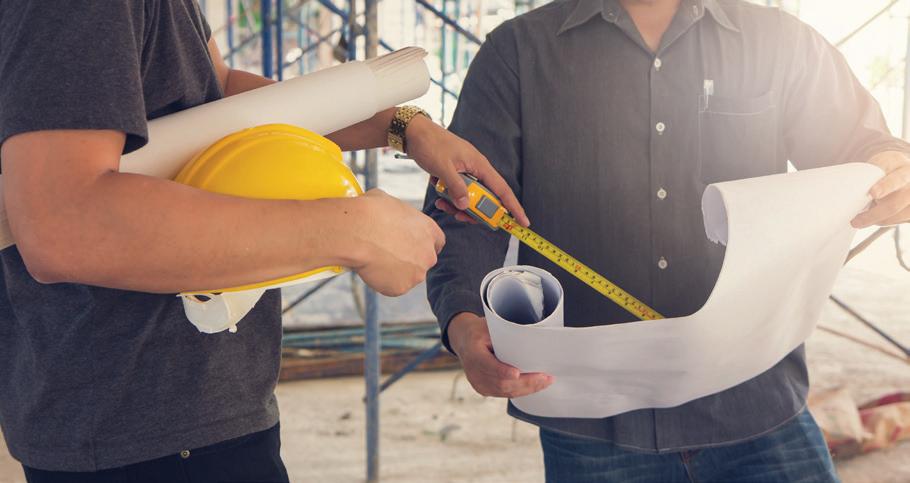
23 The New Blueprint for Construction Safety
AI-powered platforms offer enhanced insight into emerging risks.
BY DAVID TIBBETTS
25 Technology is Pushing the Envelope for Safety Training
New technologies provide hands-on ways to safely train employees without slowing down operations.
BY ADRIENNE SELKO
28 Understanding and Avoiding Electrocution Risks
Comprehensive training and a robust safety culture are key to preventing electrocution risks in manufacturing settings.
BY RANDY DOMBROWSKI
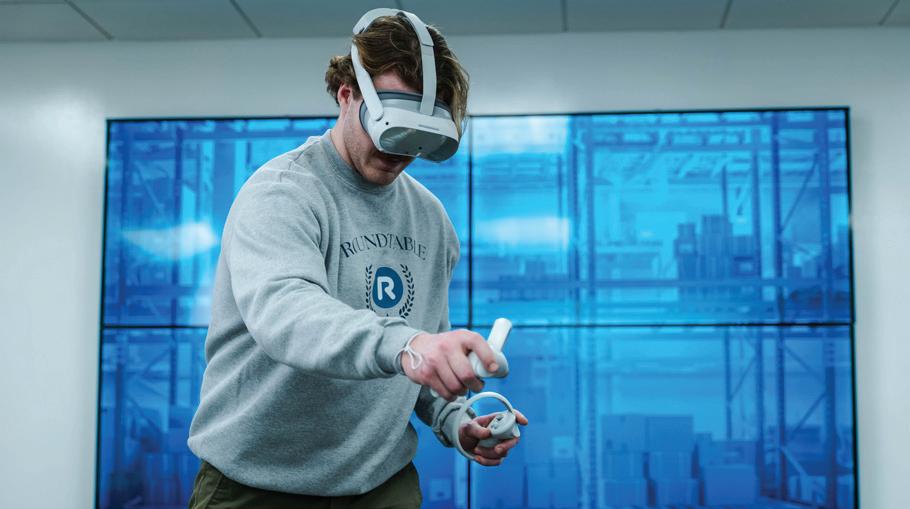
ITEM: “Employee Perceptions of Workplace Safety in 2025,” presented by Danielle Sherman of Wired Research and Peter Steinfeld of AlertMedia. Workplace safety is a top priority for employees across industries, but new data reveals that many workers feel unsafe at work and unprepared to handle emergencies. In this webinar, you’ll learn why barriers to safety reporting undermines trust and engagement, and how employers can improve safety outcomes through timely and effective communication.
ITEM: “From Reactive to Proactive: A Road Map to Safety Excellence,” presented by Rajiv Jalim of AMCS Group along with Jason Schmitz and Jose Orsini of Trinity Consultants. By leveraging leadership engagement, employee involvement, analytics and innovative technology, companies can move beyond basic compliance and build a resilient, forward-thinking safety program. This webinar provides a structured road map to help organizations build a safety-first culture.
ITEM: “AI for Workplace Safety: Enhancing and Simplifying the Ergonomics Process,” presented by Rick Barker and Rachel Zoky of VelocityEHS. Workplace ergonomics has made manufacturing safer, but traditional assessments can be costly and disruptive. AI-based sensorless motion-capture tech, using just a smartphone, can simplify and improve the process, helping safety managers focus on what matters— improving jobs and reducing MSD risk.
For more details, go to: www.ehstoday.com/webinars.
EHS TODAY (USPS Permit 905-040), ISSN 1945-9599 print, ISSN 2771-7267 online is published 4 times per year (Spring, Summer, Fall, Winter) by Endeavor Business Media, LLC. 201 N. Main St. 5th Floor., Fort Atkinson, WI 53538. Periodicals postage paid at Fort Atkinson, WI, and additional mailing offices. POSTMASTER: Send address changes to EHS TODAY, PO Box 3257, Northbrook, IL 60065-3257. SUBSCRIPTIONS: Publisher reserves the right to reject non-qualified subscriptions. Subscription prices: U.S. $86.25 per year; Canada/Mexico $111.25 per year; All other countries $136.25 per year. All subscriptions are payable in U.S. funds. Send subscription inquiries to EHS Today, PO Box 3257, Northbrook, IL 60065-3257. Customer service can be reached toll-free at 877-382-9187 or at ehstoday@omeda.com for magazine subscription assistance or questions. Printed in the USA. Copyright 2025 Endeavor Business Media, LLC. All rights reserved. No part of this publication may be reproduced or transmitted in any form or by any means, electronic or mechanical, including photocopies, recordings, or any information storage or retrieval system without permission from the publisher. Endeavor Business Media, LLC does not assume and hereby disclaims any liability to any person or company for any loss or damage caused by errors or omissions in the material herein, regardless of whether such errors result from negligence, accident, or any other cause whatsoever. The views and opinions in the articles herein are not to be taken as official expressions of the publishers, unless so stated. The publishers do not warrant either expressly or by implication, the factual accuracy of the articles herein, nor do they so warrant any views or opinions by the authors of said articles.


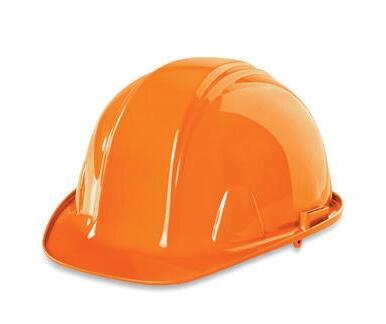
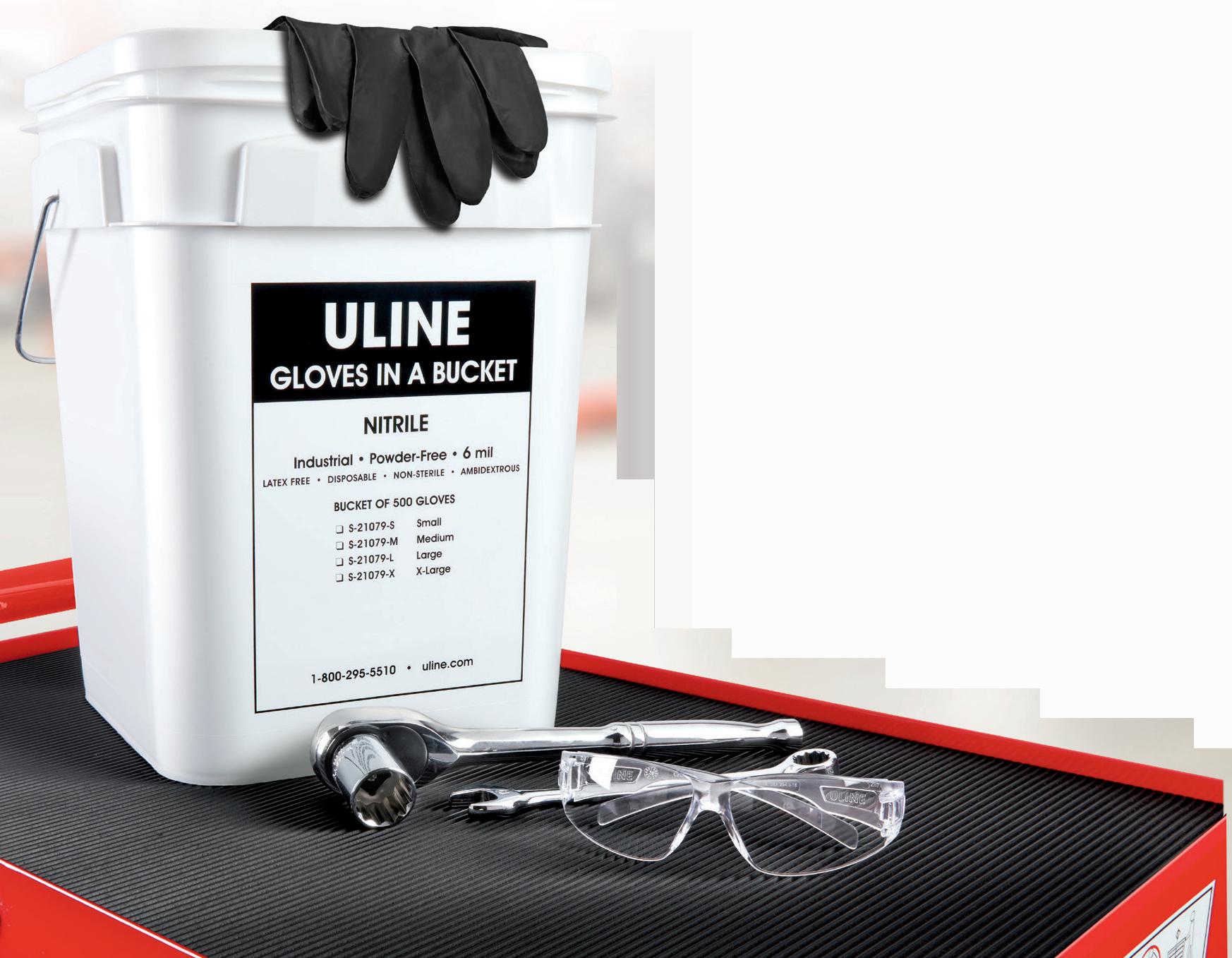
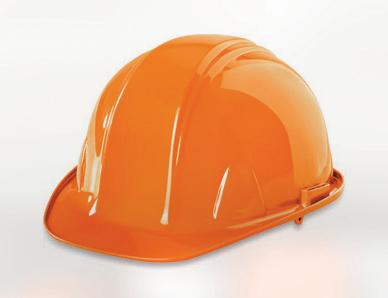


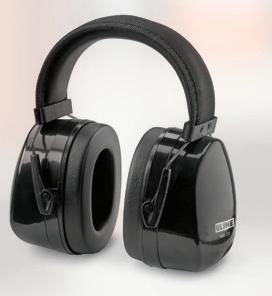
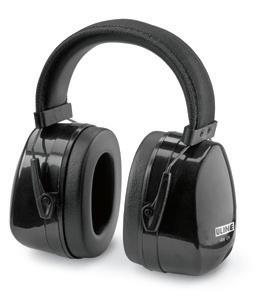






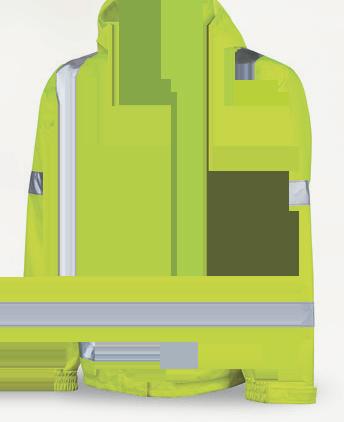
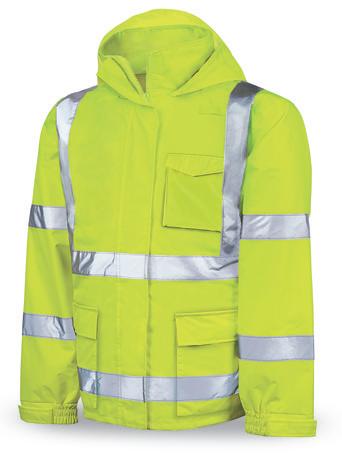


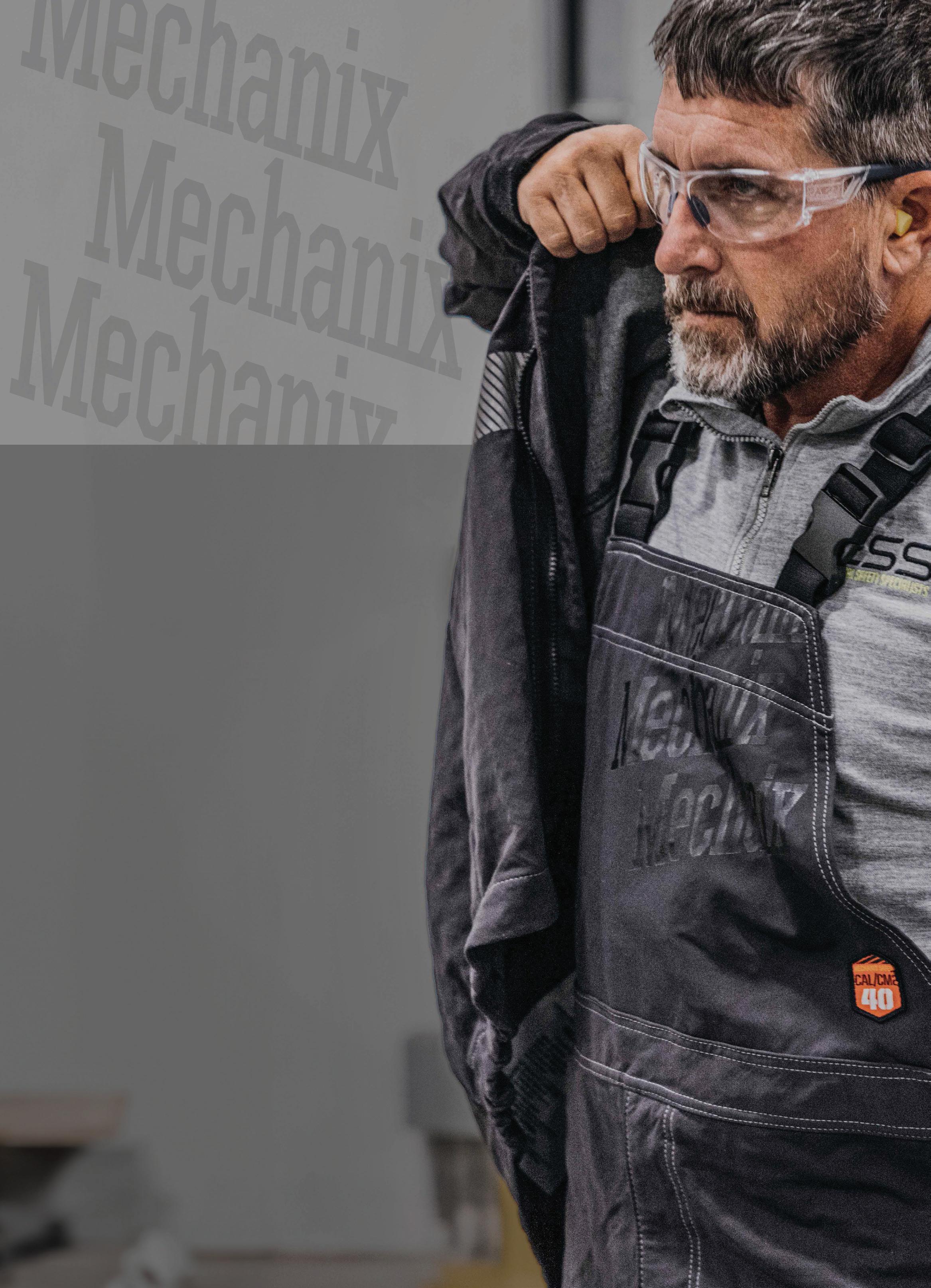



MORE LIGHTWEIGHT

MORE FLEXIBLE

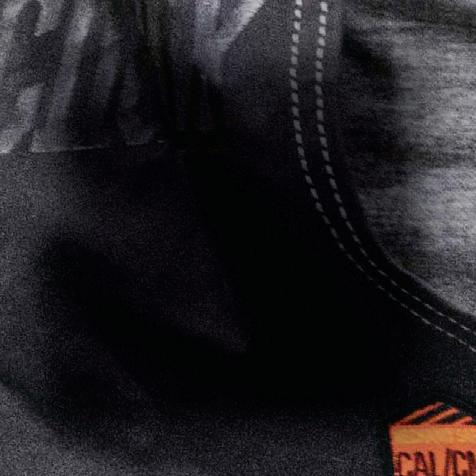
This suit is a game changer. I highly recommend this product to any facility looking to prioritize the safety and comfort of their employees.
MATT ATTLEBERGER | MAINTENANCE MANAGER AT APS
The EHS community weighs in on the good, the bad and the ugly possibilities of deregulating the workplace.
Journalists, no matter what you might think or might have heard, really don’t have all the answers… but we sure have a lot of questions. We find out what’s going on out there in the real world, and we ask people in the know why it’s happening, and then—especially for those of us in the business media— we ask what it all means for our readers.
Lately, there has been a LOT of news about the Trump administration’s regulatory (or should that be deregulatory?) actions as they affect workplace safety. Of course, all news is subject to interpretation, depending on the agendas of the media sources reporting it, and it’s not always clear as to whether a specific action will benefit or hurt the promotion of occupational health and safety… or maybe it won’t have any impact at all, which is another distinct possibility.
Rather than picking sides, we did what we do best: We asked safety professionals what they thought. In a recent online poll that we sent out this past spring, we asked our readers a couple pulse-taking questions to get a better idea as to how the EHS community was reacting to the safety-oriented actions coming out of Washington. We heard from over 800 readers, and nearly 200 of them took us up on the chance to also add their own comments after answering the quiz questions. For the record, here’s how the polling results went:
Do you think the Trump Administration will have a positive effect on OSHA?
56% said No, 31% said Yes, and 13% said Don’t Know. Do you think the Trump Administration will have a positive effect on EPA?
61% said No, 29% said Yes, and 10% said Don’t Know. Do you think the Trump Administration will have a positive effect on workplace safety overall?
60% said No, 28% said Yes, and 12% said Don’t Know.
Dave Blanchard Editor-in-Chief

Just as interesting as the poll results were the comments, a small but representative sampling of which are below (you can find more of the comments in the online version of this column):
» The Trump administration will bring back “common sense” oversight to OSHA, assisting companies to be safer with tools and expertise, instead of pushing punitive action and overreaching, as it’s been the last few years.
» Nothing that the Trump administration has done is for the betterment of society. It is just another attempt to cut regulations with a chainsaw.
» The current administration is rolling back safety, testing and regulations. They are gutting agencies set up to protect people and the environment. They are removing protections on our land, air and water. It’s so sad to see all the steps backward.
» The reckless disregard for safety will return the USA to the robber baron era that will shield corporations from responsibility for the safety of their employees.
» Trump will bring common sense back to regulation. Since 2020 regulations from EPA and OSHA have NOT been about safety and health; instead, they have been about fulfilling DEI mandates and baseless global warming initiatives, misusing emergency response standards, and making laws that cannot realistically be complied with.
» The Trump administration running workplace safety is like a serial arsonist running the fire department. No knowledgeof what it takes to put fires out, just a bunch of experience starting fires.
» It is too early to tell what direction things will go with this administration and department leaders.
And there you have it—a quick peek into the thoughts and concerns of your EHS peers as to what the first 100+ days of the Trump 2.0 administration have meant/will mean to the safety profession. We’ll continue to report on the latest and most relevant regulatory news that comes out of Washington and the state agencies; it’s safe to say that there will be plenty more to come. And as always, ensuring and protecting the health and safety of workers will ultimately rely not on politicians or bureaucrats, but on the EHS professionals managing the workplace.
Send an e-mail with your thoughts to dblanchard@endeavorb2b.com.
MEET THE NEW MASTER LOCK cLOTO™
Track safety procedures, reduce human error and empower your team in real time with our new, technology-based lockout tagout solution.
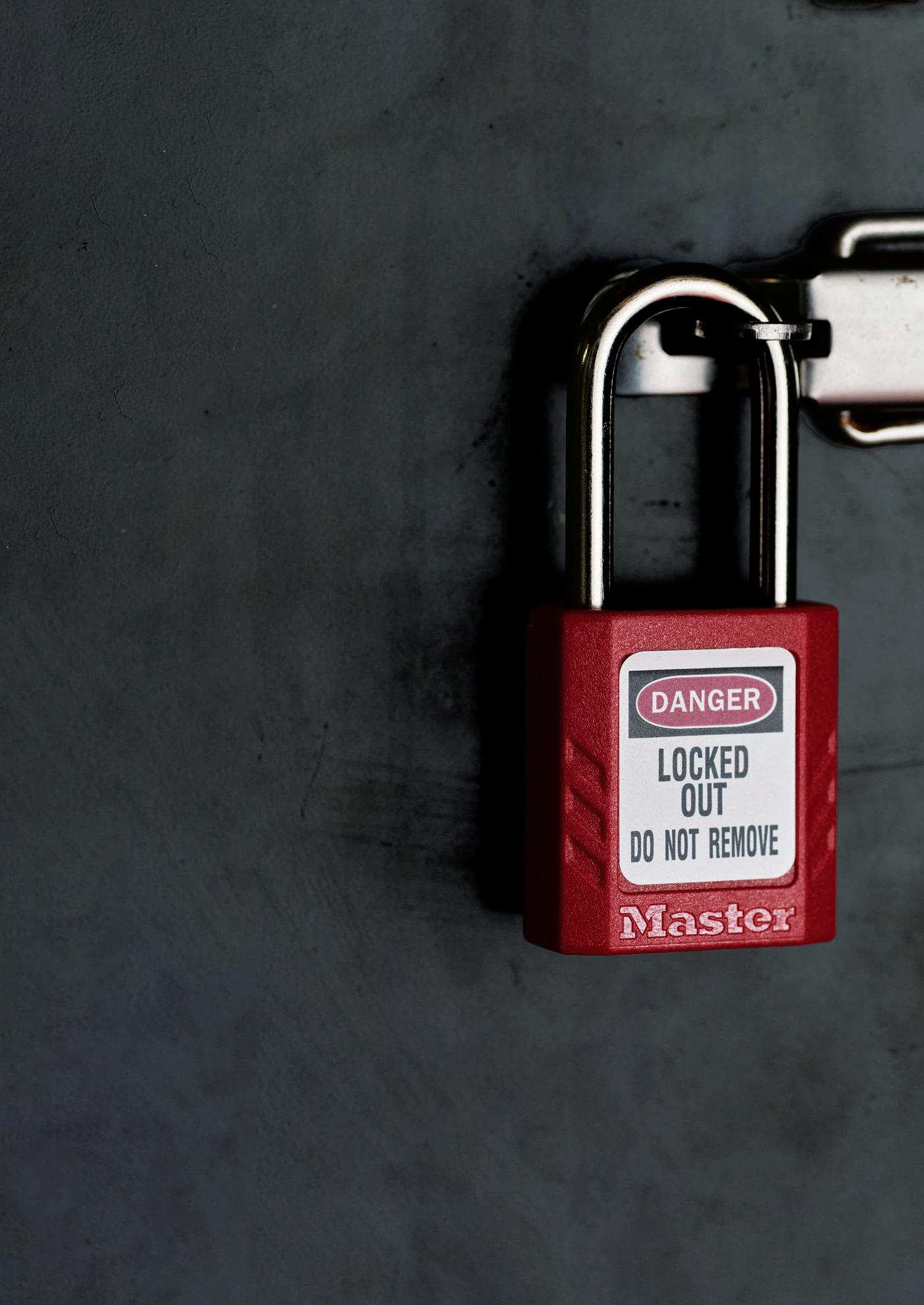
SAFETY LEADERSHIP CONFERENCE, BOOTH 1515

Adrienne Selko Senior Editor
Skills-based hiring offers a way to bring in more candidates to the field.
If we hire people based on their ability to do the job, why are so many hiring managers still focused on an increasingly narrow pool those with college degrees? Is that the only path to job success?
As EHS professionals know well, there is no singular path that leads people to this field. They come from a wide variety of professions and skills. So, shouldn’t there be a way to transfer these skills to EHS professional requirements and not solely rely on a four-year college degree? Can’t credentials specific to skills needed in the profession currently and in the future be created?
The idea of microcredentials, which are short learning programs that develop specific competencies that lead to certifications, is something that Kathleen deLaski has been studying for many years, and what drove her to create the Education Design Lab in 2012. The Lab has been successful as it is currently working with 800 higher education institutions on creating microcredentials, which are short learning programs that develop specific competencies that lead to certifications.
This relatively new form of education, which moves away from the ingrained concept that someone needs a college degree in order to find a job, has quietly made traction. The best example is that of IBM. Five years ago, 90% of their jobs required a college degree. Today, only 50% have that requirement, with 20% of professional roles filled by noncollege graduates.
“Employers who are early adopters of this practice are the companies that are most worried about where their talent pipeline will come from over the next decade or two,” said deLelaski. “Those companies either have an aging workforce or the skills they need to operate are changing quickly, and they need to have a process to reskill. If either of those two circumstances applies, skill-based hiring is becoming a necessity, not a nice-to-have.”
In addition to skills-based hiring, employers in a particular industry can be part of the education process by designing jobs with the intent of providing credentials. In her book, Who

Needs College Anyway?, she offers some parameters around designing a program.
Design criteria for employers include:
» Certifications must be industry recognized.
» Certifications must be universally understood by learners and employers.
» Learners need to be paid.
» Employers need to be incentivized, if not paid.
While the assumption might be that the C-suite needs to shift its perspective, deLaski says that’s really not the case. “I feel that the C-suite gets the argument that we need to widen the aperture and look at learners that have different backgrounds and a broader array of life skills. And they are willing to open that aperture to do that. It’s more at the hiring manager level that you see a reluctance. It’s not that they are against it; it’s just a change management process to reconfigure job descriptions. A lot of employers struggle to name the skills that are universal across industries.”
This exercise might benefit the safety industry, which currently bases its certifications on bachelor’s degrees. Why not create microcredentials that take into account experience and other skills, as the first level of entry into the field? This type of hiring is gaining popularity. According to a 2023 survey done by Coursera, 40% of employers have hired someone with a microcredential.
This high number signals the changing landscape of education. Adjusting long-held education requirements is a necessary step. Using microcredentials and other forms of specific training would attract a wider pool of applicants. And as the workforce shrinks due to demographics, alternative forms of education prerequisites seem like a smart strategy.

Send an e-mail with your thoughts to aselko@endeavorb2b.com.
The journey to safety excellence is not paved with quick fixes but with deliberate, data-informed strategies.
By Shawn M. Galloway
Throwing programs at problems is never an effective approach to improving safety. However, knee-jerk reactions to undesirable events or performance are evident in many well-intentioned organizations. This reactive approach often leads to short-term fixes that may temporarily mask issues but fail to address the underlying root causes. Rather than implementing hastily devised programs or policies, organizations should develop strategic, wellresearched initiatives that align with long-term goals and are informed by data-driven insights.
By fostering proactive problem-solving and a continuous learning culture, organizations can ensure that their efforts to improve safety result in genuine, lasting change. This requires a commitment to understanding the complexities of safety challenges and engaging the appropriate stakeholders in creating a cohesive strategy tailored to their unique environments while supporting the overall business trajectory.
Lasting improvement requires a plan that necessitates a strategy. A strategy demands focus, which should create value validated through data and perceptions. I call this the PSFV (Plan, Strategy, Focus, Value) Framework. To navigate this journey, organizations must adopt a systematic approach that highlights planning, strategy, focus and value through datadriven insights. Each of these components plays a crucial role in ensuring that improvement efforts yield tangible benefits for both the organization and its people.
“By failing to prepare, you are preparing to fail.”
—Benjamin Franklin
At the heart of any successful initiative is a solid plan. Improvement initiatives require clear objectives and a defined pathway to achieve them. Without a well-structured plan, efforts can become fragmented and lack direction, resulting in inefficiencies or failure to achieve intended outcomes.
“Strategy without tactics is the slowest route to victory. Tactics without strategy is the noise before defeat.” —Sun Tzu
A plan is only as effective as the strategy it is based on. Strategy provides the essential framework of choices and trade-offs that an organization makes to capture and deliver value. This involves making informed decisions that balance
short-term gains with long-term goals. A well-defined strategy should focus on aspects that drive value within the organization while considering the available resources and capabilities.
“You can focus on things that are barriers or you can focus on scaling the wall or redefining the problem.” —Tim Cook While strategy outlines the road map, focus hones the organization’s attention on what truly matters. To create meaningful improvements, organizations should concentrate on specific areas critical for success. This means prioritizing initiatives that not only address immediate concerns but also sustainably improve both safety performance and the occupational and safety culture.
“What gets measured gets managed.” —Peter Drucker Value creation is fundamental to the improvement process. However, value must not only be genuine; it must also be perceived as such by all stakeholders within the organization. To ensure this perception, ongoing verification through data collection and analysis is vital. Engaging with the workforce to understand their perceptions of value can lead to greater alignment and satisfaction, ultimately enhancing morale, engagement and productivity.
To achieve meaningful safety improvements, a strategic focus on two critical areas is necessary:
» Improving Safety Performance: This entails identifying the most effective measures to reduce and prevent incidents and improve safety practices. Organizations must analyze leading and lagging indicator data and implement targeted interventions, keeping the most important thing, the most important thing.
» Enhancing Occupational Culture: Safety culture is a component of the overall occupational culture. A culture that values and prioritizes safety over cost, schedule and production is crucial for maintaining consistent safe practices. Organizations should foster a work experience where safety is prioritized in day-to-day leadership decisions and actions, and employees feel accountable for voicing concerns and contributing to safety strategies.
To maintain clarity and focus in the pursuit of safety improvements, it’s essential to consider three guiding questions:
» What actions would most directly improve safety performance and occupational culture? This question encourages organizations to engage in critical thinking about their current practices and identify actionable steps for improvement.
» What strategies would sustainably enhance the safety system’s ability to prevent and recover from human error? Understanding the systems that support safety can help organizations build resilience and adapt to new challenges.
» How will you ensure that the focused areas foster a perception of value across all levels of the workforce? Engaging with and obtaining feedback from customers
and consumers of safety improvement efforts ensures that initiatives resonate and effectively meet their needs.
A structured approach to safety improvement—rooted in planning, strategy, focus and value—through data-driven insights is essential for organizations seeking to foster a culture of safety and resilience. By prioritizing identified areas for enhancement and using guided questions to inform decisions, organizations can cultivate environments that not only comply with safety standards but also enhance the overall workplace culture.
The journey to safety excellence is not paved with quick fixes but with deliberate, data-informed strategies. By embracing the PSFV framework, organizations can not only build a foundation for immediate improvements but also reinforce a sustainable path toward future resilience. This approach requires intentional planning, strategic
acumen, focused efforts, and continuous measurement of value and perception.
As organizations commit to this systematic journey, they will discover that true safety is not just a goal, but a vital aspect of their organizational DNA. The pursuit of safety excellence becomes more than a compliance exercise; it evolves into a shared vision that inspires trust, empowers employees and drives the organization toward enduring success. As we adopt these principles, the real question is not whether we can improve safety, but how far-reaching the positive impact of our organizational culture can ultimately be. EHS
Shawn M. Galloway is CEO of ProAct Safety; host of the podcast, “Safety Culture Excellence”; and a past keynote speaker at EHS Today’s Safety Leadership Conference.

• Advance work access lifts elevate workers, materials & tools to convenient work heights at the push of a button.
• Applications include production, assembly, inspection, maintenance and order picking.
We h ve over 1500 st nd rd products s st rting point to meet your needs nd often end up with tot lly custom nd unique design. Options include h ndr ils of ll types including retr cting versions, vertic l rising g tes, swing g tes, pipe st nchions with ch ins, pl tform cut-outs, pl tform extensions including retr cting versions, work benches, tool boxes, ccur te positioning with + -1/8” repe t bility, power drives for horizont l movement, speci l finishes such s st inless steel or epoxy p int, speci l fluids such s bio-degr d ble or fire resist nt, explosion proof power units, single st ge lifts nd multi-st ge lifts.
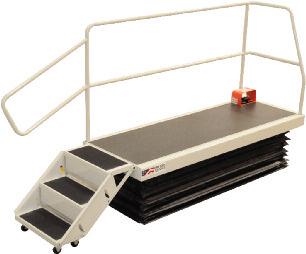
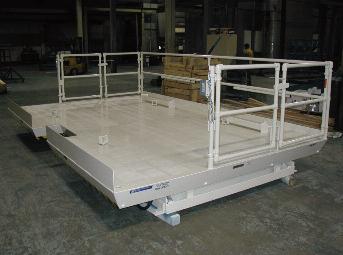
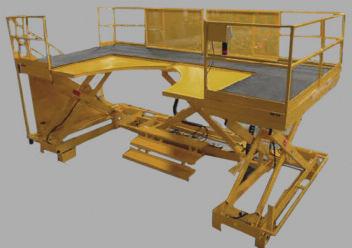


Learn how to turn your raw numbers into compelling arguments that can result in safer workplaces.
By Nicole Stempak
That World War II-era slogan, “Use it up, wear it out, make it do or do without” could take on a whole new meaning if applied to workplace safety data (minus the last bit, of course).
That data could have another life, one filled with improvements, solutions and possibilities instead of collecting dust in three-ring binders or taking up space on company servers.
Director of safety Trey White and director of human resources Mike Cutrona have made that idea a reality at Orgill, an independent hardware distributor. They will be sharing their experiences and expertise at Safety Leadership Conference 2025, being held October 20-22 in Phoenix. More information, including registration, can be found at www.safetyleadershipconference. com. Below is a preview of what to expect from White and Cutrona’s presentation.


How can data make employees safer and more engaged?
Mike Cutrona: Data, when paired with action and a clear reason behind it, gives employees a snapshot of where things stand—and why it matters. Involving employees in safety committees or other safety-type committees gains buy-in and empowers them to protect each other and their colleagues. All employees, from leaders to employees, have to be engaged and buy-in.
Can you tell me more about how you leveraged safety data to transform your workplace?
EHS Today: Safety professionals collect a lot of data. How can they make it work for them?
Trey White: Data is a great starting point for measuring success, but it takes actions to truly earn buy-in. No one person at a business can handle all aspects of safety. Every employee has a part to play in creating the safety culture, and part of that is the understanding of the safety data. That understanding leads to engagement, and that’s what makes the data truly work for safety professionals.
Cutrona: Building a safety culture is a journey. At Orgill, it started with a communication plan that focused on data transparency, clear action items and consistent follow up. That approach has helped reduce workplace incidents and thus lowered costs associated with workers’ compensation and facility infrastructure. Transparency and knowledge around injuries and/ or recordables; injuries less than one year; days away, restricted or transferred (DART); total recordable incident rate (TRIR); and other metrics have been a big part of our success.
What have you been most surprised by on your journey?
White: I’ve been most surprised by how much of a difference local buy-in can make. Having buy-in from key stakeholders at the local level has helped create awareness of safety metrics and how they assist with the end business product.
What’s something you wish you had done differently?
White: I wish we had found a balance between different jurisdictions/state requirements at the local level and consistency with the safety initiatives across all locations.
How do you decide what data to leverage or use as key performance indicators?
White: We started with the basics—DART, severity, TRIR— and then each year expanded [by adding] a new category to monitor. Whether it’s tracking injuries per 100 employees or focusing on injuries that happen within the first year, the goal is always to look where the incidents are occurring and create a balanced way to compare performance across all locations.
What tools or techniques have you employed to connect the dots between safety performance and business performance?
Cutrona: We’ve focused on building a culture of transparency within safety, and one of the ways we do that is by sharing the return on investment (ROI) with all levels of employees
through the tool distribution center (DC) safety scorecard, a device we use to inform the DCs how they are performing on key metrics. It is updated monthly, and all locations have access and can review and compare.
How can safety and HR work together, as you two have, to harness data to improve safety and engagement?
Cutrona: In the Orgill culture, HR does not necessarily own safety but is the main driver to keep the finger on the pulse through initiatives, awareness and training. HR reports out metrics, successes and improvement opportunities at town halls, weekly announcements and other safety meetings.
What’s something you hope attendees take away from your presentation?
Cutrona: A strong safety culture is not a short-term goal; it’s a long-term commitment. Little actions matter when trying to create a strong safety culture and get buy-in. Safety is a journey that never stops, and you have to always look for ways to continuously improve. EHS
The best way to win your case? Avoiding the courtroom altogether.
By Nicole Stempak
Those T.V. legal procedurals, with their expertly tailored litigators and dramatic dialog, miss the point of a winning legal defense: finding a resolution well before the case ever gets to the courtroom, ideally even before an Occupational Safety and Health Administration (OSHA) inspector leaves your facility.
Micah Dickie, a partner in Fisher Phillips’ Workplace Safety and Catastrophe Management Practice Group, will share how to meet—and maintain—OSHA compliance, resulting in fewer citations issued after inspections and citations getting withdrawn at an OSHA informal as well as successfully challenging OSHA citations before administrative law judges.
Dickie will speak about “Save the Receipts: A Winning Strategy for OSHA and OSHRC Litigation” at Safety Leadership Conference 2025, being held October 20-22 in Phoenix. More information, including registration, can be found at www. safetyleadershipconference.com. Below is a preview of what to expect from Dickie’s presentation.
EHS Today: Your presentation title uses the word “receipts.” Whenever I hear that word, I think of the comedy skits where a frazzled guy hands a shoebox full of crumpled up paper to his accountant. I know that’s not an apt analogy, so I want to know how you define receipts and how can they help a company win in OSHA and Occupational Safety and Health Review Commission (OSHRC) litigation?
Dickie: It’s about proof. For example, when OSHA shows up for an inspection, it conducts interviews and requests documentation from employers. Often, employees cannot remember the specifics of a particular safety topic on which they’ve been trained.

Sometimes, this is due to overly formalistic wording of questions from OSHA, like “Have you been trained on the effective isolation of hazardous energy?” Some employees will go blank in response to that question, even though they are an authorized lockout/tagout (LOTO) employee and even when they’ve been trained in the last year on LOTO. Consequently, OSHA presumes this employee has not been trained.

If an employer does not have proof of that training, particularly where there is an accident involving service and maintenance, OSHA will likely issue a training citation. Fast forward to OSHRC litigation, and a judge wants to see proof of training, not just testimony from the company’s management.
Is there anything you wish safety professionals could learn (or unlearn) about OSHA regulations and recordkeeping?
Learning what regulations apply to a business and what those regulations actually require is something safety professionals should learn and get a refresh on as time goes by. OSHA regulations impose substantial compliance obligations on employers in every industry, so it pays to read them often and then check for compliance against what the regulations require. OSHA has many letters of interpretation that can help safety professionals in close cases and, of course, legal counsel can help as well.
How can good recordkeeping protect a company before, during and after an OSHA inspection?
As we talked about above, good documentation can, though it does not always, keep an OSHA inspection fairly short and sweet. If a topic like powered industrial trucks (PITs) are within the scope of an inspection, OSHA will ask for employee certification records. Failing to keep and provide those during an inspection will signal to OSHA that the employer likely has other gaps in its paperwork—and often in its actual safety compliance.
What are some recordkeeping best practices during an OSHA informal and hearing before an administrative law judge?
For OSHA informal conferences, to some extent the table is already set for an employer on recordkeeping. If an employer had a document that OSHA asked for or if it’s within the scope of the inspection, then the employer should almost always produce that document.
In the rare case that OSHA decides to cite an employer for a lack of documentation proving compliance with a standard or if the employer has such documentation that pre-dates the inspection, then the employer can offer to provide that to OSHA after the informal conference. That is somewhat rare, and you have to be careful about what you share with OSHA, however.
Some documentation is mandatory, but not always. What do you often recommend in those instances where documentation could be seen as optional, nice to have or a wish list item?
Triage. In other words, as we discussed, OSHA regulations require a ton of stuff for safety professionals. In an environment where not everything can be fully documented, prioritize things that often come into play during litigation, like job safety analyses (JSAs) and refresher trainings. While they often are not required by regulations, having frequent JSAs shows that the employer is discussing safety hazards with workers before a project begins.
Similarly, original documentation done at the beginning of employment can get lost, and sometimes that last annual refresher training will be the only proof an employer might have that training was ever actually completed, even though it is not required on an annual basis.
What’s one thing safety professionals should start doing today with regard to recordkeeping?
In every meeting with employees where a safety topic is covered, have a roster where you can have employees print and sign. Ensure that the full date and what was covered is documented. The second most important thing would be discipline. Document any coaching you do for a safety violation.
What’s one thing safety professionals should stop doing today with regard to recordkeeping?
This one goes against the theme we’ve discussed, but hold off on documenting every finding after an accident. An employer’s internal investigation document, if not directed by legal counsel, can be used against it. I cannot count how many times an employer investigated an accident and put down lack of training, lack of proper tools or lack of supervision as a cause of an accident. This stuff can be discussed, and actions can be taken after an accident, but wait to document until you’ve had the benefit of legal counsel.
What’s one thing you hope attendees take away from your presentation?
Paperwork is tedious, but it can make or break an employer’s defenses to an OSHA citation. EHS

EHS professionals own numerous ESG-linked issues, and will navigate volatile political, policy and economic impacts in 2025. By
Adam Freedgood
The new federal administration is reversing positions on certain ESG (environmental, social and governance) initiatives, including DEI (diversity, equity and inclusion) and federal leadership of the transition to renewable energy. With the political, regulatory and economic climates in flux, it’s more crucial than ever for EHS professionals to be aware of changing dynamics and potential impacts on compliance.
This article clarifies the evolving EHS and ESG interface, offering insights on how EHS professionals can proactively manage risks and seize opportunities in the face of uncertainty. First, a quick reference guide (Table 1) shows the relationship between traditional EHS functions and an ever-growing list of management and disclosure topics that fall under the broad umbrella of ESG or corporate sustainability.
Table 1 shows which ESG issues are typically owned and managed by EHS and which are owned or supported by other teams. Importantly, ESG and sustainability are different concepts. ESG has a reporting focus—for example, meeting investors’ demands for greater amounts of risk-oriented data. Sustainability encompasses a company’s long-term operating focus: how a business ensures prosperity from an environmental, social and economic perspective. The two terms are often used interchangeably, which can be confusing. High-priority ESG issues that pertain to a specific company based on its industry and activities are known as “materially significant” issues. These topics are the priorities to measure, manage and report to stakeholders. There are various reporting frameworks for doing so. Companies report on some topics
through government channels, including OSHA and EPA. Broader reporting happens through voluntary disclosures— for example, answering surveys from buyers and publishing sustainability reports for investors, employees and customers. Most issues under the umbrella of ESG or sustainability have some impact on the EHS function and vice versa. Issue-byissue, we’ll analyze the seven areas undergoing the greatest level of change and those requiring the most coordination between EHS and managers in other areas of the business: Federal Transition Concern | Areas to monitor for changing enforcement, ongoing political division, controversy
Economic Concern | Impact on business profitability, top line growth, compliance with customer requirements Regulatory Concern | ESG-related policies with impacts for business ✔ Resources and actions for EHS leaders.
The Trump administration is promising to unleash an all-of-the-above energy bonanza while simultaneously eliminating, rebranding or blocking implementation of Inflation Reduction Act (IRA) programs to help manufacturers decrease energy costs and carbon emissions through subsidized cleantech investments. The IRA remains popular for its positive impacts on profitability and job creation. Energy policies such as repealing the ban on LNG exports may have the effect of driving up domestic energy prices, which would impact COGS for
manufacturers and product prices for consumers.
The business case for energy management remains clear. EHS professionals play a leading role in helping companies reduce energy and pollution-related risks. Efficiency measures that reduce energy consumption typically correspond with decreased emissions of regulated pollutants, including NOx, SOx, VOC and PM. This is especially important during times of energy price volatility. Federal grants that improve the financial ROI of renewable energy and energy efficiency measures, such as Rural Energy for America Program (REAP) grants, have been paused indefinitely.
In select jurisdictions, such as New York City, energy efficiency is now the law. Exceeding commercial building energy benchmarks results in steep financial penalties for owners under NYC Local Law 97, creating a strong mandate for energy management, deep efficiency and reporting.
✔ Resources and actions for EHS leaders:
» Participate in the U.S. Department of Energy’s Better Buildings, Better Plants initiative, a long-standing program to help manufacturers improve energy efficiency and reduce COGS related to energy and waste. Resources include free onsite energy audits, training, energy management software and more.
» “You cannot manage what you do not measure.” Implement an energy management system, in line with the ISO 50001 standard.
EHS professionals will navigate a maze of jurisdiction-specific requirements, led by California and the European Union (EU). The U.S. FTC’s “Green Guides” that protect the public from unfair or deceptive green marketing claims will endure, alongside parallel regulations for companies placing products on the market in Canada and the EU. For EHS leaders, that means
Changing II Political, & Regulatory, and & Economic Impacts in 2025
Outside EHS Domain
ESG Management & Disclosure Topics Environment Health & Safety Responsibility of Other Functions
(E) Energy Management & Efficiency
(E) Circularity & Waste Reduction
(E) Decarbonization i.e. GHG Emissions Reduction, Target-Setting
Operations, Finance, Procurement (Energy)
R&D, Sourcing & Procurement (Raw Material)
R&D, Supply Chain, Finance, Sustainability
(E) Physical Risks of Climate Change Finance, Legal
(E) Supply Chain - Environmental Impact
(E) Pollution Reduction - Land, Water, Air i.e. chemicals of concern
(S) DEI - i.e. Diversity, Equity, and Inclusiveness
(S) Employee Safety, Wellbeing, & Human Rights
(S) Supply Chain - Social / Labor & Human Rights
(G) Policies - Social / Labor & Human Rights
R&D, Sourcing & Procurement
R&D, Legal
HR, Legal
HR, Legal
R&D, Sourcing & Procurement, Legal
HR, Legal
(G) Policies - Environmental Legal
(G) ESG / Sustainability Reporting
(G) Tech & Innovation for EHS
Primary Ownership of Issue
Supporting Role in Issue
Limited / No Role in Issue
developing new processes and controls to substantiate product claims, including “free from,” “made with” and “made without.” This can be difficult in cases involving contaminates, such as PFAS.
Some California producers must meet the Responsible Textile Recovery Act of 2024, while food producers in the state prepare to meet the Plastic Pollution Prevention and Packaging Producer Responsibility Act, requiring single-use packaging and food service ware be recyclable or compostable by 2032.
Disparate state and international requirements on waste and non-hazardous materials management typically translate into additional compliance costs for companies. Regulatory risk mitigation becomes
Sales & Marketing, Finance, Legal, HR
R&D, IT
III Federal Transition Concern
Areas to monitor for changing enforcement, ongoing political division, political controversy
& Regulatory Concern
ESG-related policies that impact business
$ Economic Concern
Impact on business profitability, top line growth, compliance with customer requirements
more challenging in the absence of a unified federal agenda. On the bright side, weak federal coordination may translate into increased white space for leading companies to achieve brand differentiation through smart, circularitybased product innovation. Process-driven EHS professionals play a starring role when innovation involves coordinating people, capital and materials flows.
✔ Resources and actions for EHS leaders:
» EHS professionals may share accountability for measuring and reducing waste with colleagues in engineering, R&D and other areas of operations where excellence in safety, efficiency and other sustainability challenges has direct
positive implications for the bottom-line.
» Lean manufacturing, Six Sigma and operations efficiency working groups can help pinpoint the “7 sources of waste.”
» EHS leaders need to get involved as early as possible in team efforts to develop compliance strategies and work plans. Few other roles have as much direct experience with collecting and analyzing manufacturing data, supporting operational change management, and facilitating cross-functional collaboration.
Greenhouse gas emissions are not regulated at a federal level for most companies. The U.S. is once again exiting the Paris Climate Agreement, which will inevitably accelerate global warming and create confusion among corporate leaders. Thousands of U.S. companies base their own corporate GHG reduction targets on the international scientific consensus. Energy utilities may benefit from Trump-era GHG deregulation but the follow-on impacts for energy users are unclear.
On the operations side, analysts expect GHG policy rollbacks will result in higher prices for energy ratepayers by undermining programs that aimed to stabilize the long-term costs of energy by transitioning to cleaner, less expensive technologies, including wind and solar. Companies should expect energy price volatility. At a product and sales level, more and more buyers require companies to measure and disclose the carbon footprint of products using methods such as the Life Cycle Assessment (LCA). Markets for low-carbon construction materials and environmentally-oriented goods in the EU require studies to substantiate claims and disclosures used by specifiers.
✔ Resources and actions for EHS leaders:
» Federal mandates were never a significant factor in companies’ decarbonization programs. Thousands of companies have a mandate from their investors, shareholders, customers, and employees to measure and take action to reduce GHG emissions over time. Using a commitment framework, such as the Science-Based Targets Initiative or Amazon Climate Pledge, provides built-in tools to help measure and report year-overyear reductions.
» “A hedge with benefits.” EHS professionals will partner with colleagues in finance and procurement to explore renewable energy options and report to customers and investors on positive impacts. To lock-in lower prices from lower polluting energy sources contracts for renewable energy, offer a long-term discount over spot market prices.
» Organizations like the Clean Energy Buyers Association (CEBA) provide training and resources to help get started in a space that may be unfamiliar to many facilities and operations leaders.
» When it comes to measuring GHG emissions and showing progress on goals, EHS professionals have a growing number of carbon accounting software options. To minimize time and resources, it may be advisable to get third-party advice on the best approach for your specific situation.
The floods following Hurricane Helene in the southeastern states in 2024 devastated hundreds of business in agriculture, energy, logistics and manufacturing and cost over $30 billion. EHS managers play a direct role in helping their organizations prepare, prevent and recover from increasingly frequent climate-fueled natural disasters, including fires, floods, extreme heat and cold. As these incidents become increasingly frequent and severe, the disaster planning and recovery function within companies becomes more critical to ensuring business continuity.
By the end of 2025, California’s SB 261 requires some 10,000 companies doing business in the state to study and disclose the financial risks of climate-related risks to their operations and supply chain. Specifically related to rising temperatures, a new Heat Stress Rule proposed by OSHA in 2024 would require companies to implement new operating procedures to protect worker health and safety. While unlikely to be implemented by the new administration, the rule mirrors state laws already in effect in Washington, Oregon and Minnesota.
✔ Resources and actions for EHS leaders:
» “Hope for the best, prepare for the worst.” Business Continuity Plans, Disaster Recovery Plans and Incident Response Plans must be updated to address more frequent and severe climate-related incidents.
» Customers and investors require emergency plans to be in place and increasingly ask for more comprehensive planning, including tabletop exercises, recovery time statistics, simulations and reviews of insurance policy coverage information.
» GIS-powered tools can help businesses prepare their own operations, disclose risks to customers and regulators, and even create new business solutions to climate-related threats. For example, understanding location-specific water scarcity over time is essential for business continuity and to protect profit margins from increasing natural resource costs.
New regulations in California, Canada and the EU make social and environmental sustainability in supply chains the law. New rules target deforestation (EUDR) and human rights in operations and supply chains. Companies must comply if they engage in commercial activity in the jurisdiction, which includes placing products on the market, with or without a physical presence.
The biggest financial risk to companies is a combination of reputational damage and trade restrictions from noncompliance. The California Supply Chain Transparency Act carries fines of $2,500 per violation. The Canadian Modern Slavery Act (MSA) can result in fines of up to $250,000. For companies that place products on the EU market and fail to comply with EUDR, fines are up to 4% of EU sales, plus seizure of goods and exclusion from the market.
✔ Resources and actions for EHS leaders:
» These regulations cover company operations, products and supply chain. Complying often involves collaboration between EHS professionals and peers in procurement, logistics, regulatory, sales and HR.
» Waiting for a compliance survey to hit your inbox is not a good idea. The EU CSRD and EUDR impact U.S. companies. The data required to comply is extensive and may require weeks or months of lead time to work with suppliers and other business units.
» Even if you do not do business directly in Europe, you may be required to provide new information on labor and environmental practices to international customers who are directly impacted.
The Trump administration promised Americans the “cleanest air and water.” Early executive actions show multiple risks mounting. Waivers to the Clean Water Act to expedite highly polluting industrial projects may have far reaching consequences for drinking water quality, availability and human health in affected communities.
Certain companies or industries may benefit in the near term from lax enforcement and waivers. Making long-term R&D, CapEx and process decisions based on a temporarily lax four-year regulatory cycle would have negative long-term compliance cost consequences for the majority companies.
Expect some environmental reporting requirements and pollution control measures to be eased as chemical industry and fossil fuel lobbyists take the helm at the U.S. EPA. For most companies and industrial facilities with a strong EHS program, the fed is just one of multiple jurisdictions responsible for pollution control. State, municipal and customer-driven requirements continue to drive EHS programs. For example, wastewater quality requirements imposed by a local municipality will not be affected by federal deregulation.
✔ Resources and actions for EHS leaders:
» For companies that earn a premium market position with customers through differentiation on environmental benefits, it will be business as usual in 2025.
» Leading companies will maintain current best management practices for pollution control and reporting in order to meet other stakeholder requirements, including state and local jurisdictions, NGO watchdogs, customers, and communities.
» Voluntary standards, such as Zero Discharge of Hazardous Chemicals (ZDHC), offer prescriptive “beyond compliance” guidelines for producers and buyers in apparel and consumer goods sectors.
Federal agencies are purging DEI from leadership roles, contract requirements and procurement programs. Companies that sell to the federal government will experience changing business requirements. However, companies that sell to other buyers (e.g., state and local governments, retailers and other businesses) will still find that a diverse and inclusive company translates into less risk and more opportunity. There is a proven financial relationship between employee turnover, employee satisfaction, safety and profitability. Programs to prevent bias and discrimination are aimed at reducing costly lawsuits and toxic workplace conditions that drag down productivity, morale and retention. Cultivating an inclusive culture where employees feel like they belong has a net positive financial ROI for companies. For example, there is a strong correlation between turnover and safety incidents.
A few large companies have been targeted in court by activists who scare companies into abandoning corporate DEI practices. Other large firms like Costco are holding out. The vast majority of companies do not practice “race based employment,” but instead define DEI programs in ways that focus on positive cultural benefits of inclusion, antidiscrimination and anti-harassment. Anti-harassment programs and training are still required by law in certain states, including California, New York and Illinois. It remains illegal under federal law to discriminate based on protected status (e.g., race, ethnicity, age and gender identity) when hiring.
✔ Resources and actions for EHS leaders:
» DEI is traditionally owned by corporate HR and legal functions; however, EHS leaders may benefit from the proven correlation of a healthy culture, employee retention, safety and quality.
» Companies do not need to call wellness-related programs DEI to reap the benefits. The best policies reinforce the benefits of a workplace that values mutual respect, allyship and appreciation for different life experiences without alienating any group of employees.
» Employee resource groups (ERGs) must be open to all employees, not just a particular group.
» Engagement surveys to measure effectiveness of safety and security practices can also be used to measure employee views on equity and inclusiveness before gaps result in costly incidents or turnover. EHS
Adam Freedgood is principal and co-founder of Third Partners, a consultancy that helps brands and manufacturers improve performance through business-focused ESG and sustainability support.
For those safety professionals being tasked to do more with less while also lowering incidents and growing a culture of safety, technology is the linchpin to achieving meaningful improvement.
By R. Mukund

EHS leaders are at a tipping point. Workforce issues, driven by rising turnover, skills shortages and growing responsibilities, have made it more challenging than ever to maintain strong safety performance. At the same time, evolving regulations and mounting operational pressures are stretching teams thin, forcing safety to take a backseat.
Benchmark Gensuite’s 2025 EHS Benchmarking Report underscores the urgency of this issue: Over half of EHS executives report that injury frequency and severity have either remained stagnant or worsened over the past year, highlighting the urgent need for change.
Artificial intelligence (AI) solutions provide a practical and exciting opportunity to overcome these hurdles head-on. By continuously monitoring and analyzing vast amounts of data, AI empowers EHS leaders to identify and address the risks with the highest potential for harm.
When combined with enhanced training and a stronger safety culture, these data-driven insights enable organizations to transition from reactive safety management to a proactive, preventative approach. The result? A more resilient, empowered workforce and measurable improvements in safety performance.Leveraging AI: The Game-Changer for EHS Teams
According to our benchmarking report, over half of EHS leaders struggle to implement critical safety improvements, with 58% still relying on legacy methods like spreadsheets. This reliance on outdated systems makes it difficult to manage risks effectively, leaving organizations vulnerable to safety issues and incidents.
Another alarming issue contributing to the lack of progress is underreporting. Our report found 79% of EHS professionals believe that accidents, hazards and near misses go unreported; furthermore, 31% suspect that at least one-quarter of employees may not be reporting incidents at all. Without accurate data, organizations cannot fully understand their risk landscape or take proactive steps to prevent injuries.
Emerging technologies, including AI-powered real-time monitoring systems, wearable technology and mobile safety apps, offer a clear solution by bridging reporting gaps and enhancing visibility into workplace risks. These tools can track employee movements, monitor environmental conditions and send immediate alerts when unsafe behaviors or hazardous situations arise.
By collecting and analyzing real-time data, AI systems enable EHS teams to identify trends, improve safety protocols and workflows, and act before incidents occur. Additionally, AIpowered reporting tools can remove barriers to incident reporting
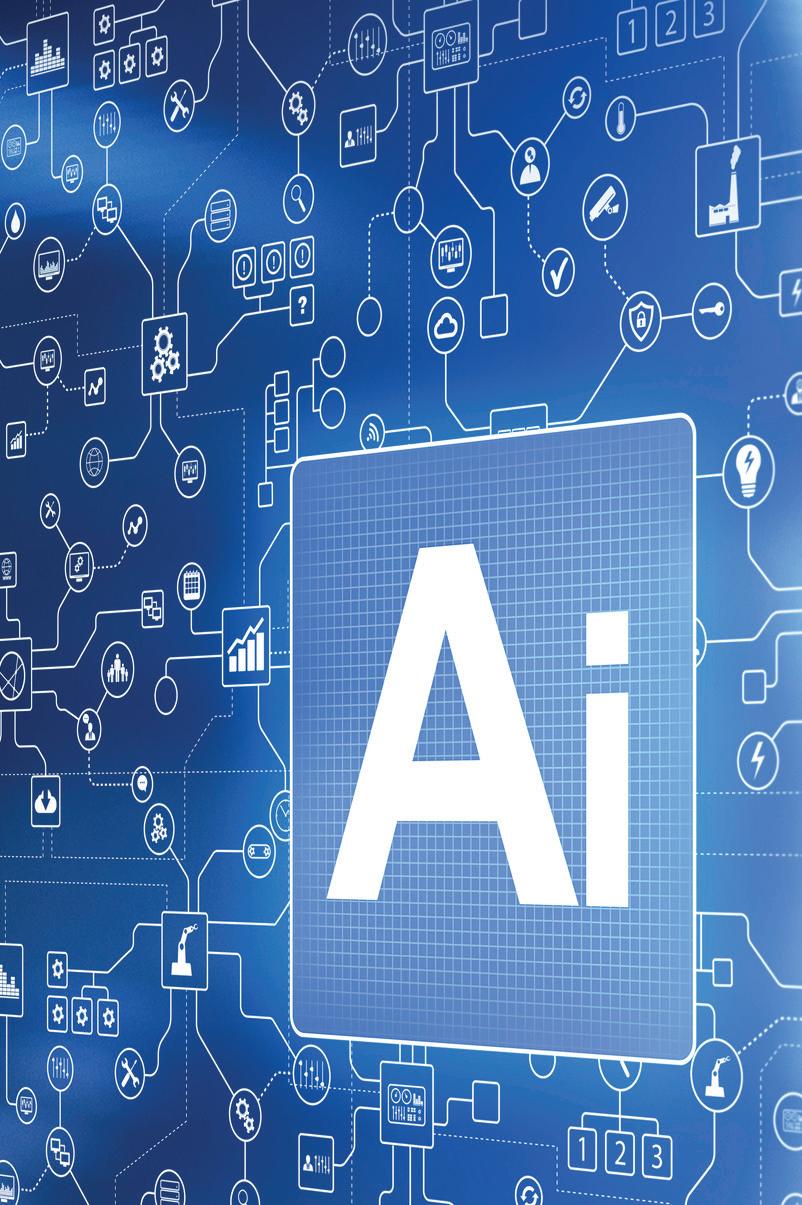
by simplifying data entry, providing real-time prompts and enabling employees to report concerns effortlessly via mobile apps.
Beyond safety management, advanced technology is transforming employee training programs. EHS teams are increasingly adopting digital training tools, such as online courses and interactive learning experiences. These platforms allow new employees to quickly gain essential knowledge while also improving long-term knowledge retention.
For instance, if a worker demonstrates unsafe behavior, AI can flag it and suggest corrective actions, ensuring timely intervention. This proactive approach detects issues and strengthens adherence to protocols, creating a safer and more responsive work environment. By offering on-demand, engaging training that caters to various learning styles, AI-driven platforms can ensure that workforce training is both personalized and effective, preparing employees to respond to safety challenges.
The integration of predictive analytics further enhances these efforts. Building on real-time monitoring and centralized data, predictive AI tools forecast risks before they lead to incidents. By analyzing patterns in employee behavior, environmental conditions and historical data, predictive models can pinpoint vulnerabilities and recommend preventive actions.
Our report found 59% of organizations are confident that generative AI can help predict and prevent injuries, and over
half of organizations are investing in AI-driven solutions in 2025. This proactive approach will not only help EHS leaders stay ahead of risks but also allow them to mitigate problems before they escalate, shifting safety from a reactive process to a continuously evolving, data-driven strategy.Cultivating a Strong Safety Culture Through Leadership
While technology plays a pivotal role in improving workplace safety, creating a strong safety culture requires embedding safety into the fabric of the organization.
Leadership is paramount in driving cultural change, and today’s EHS leaders must take a proactive, top-down approach to build safety awareness at every level. Our report found 67% of EHS leaders emphasize the importance of executive buy-in to drive safety initiatives forward. By involving senior leaders in safety efforts, organizations can demonstrate that safety is a core value, not just an afterthought.
A strong safety culture encourages open dialogue and feedback loops, whereby workers on all levels feel comfortable reporting concerns without fear of retaliation. This culture of transparency and trust allows teams to tackle issues head-on and implement effective solutions. When employees feel supported and valued, they are more likely to engage in safety practices, leading to a safer and more productive workplace.
Cross-functional collaboration is also crucial in cultivating a safety culture. EHS leaders should work closely with other departments, including operations, HR and IT, to integrate safety initiatives into everyday workflows. By fostering collaboration between teams, organizations can ensure that safety isn’t siloed in one department but is a shared responsibility for the entire company.Transforming Challenges into Opportunities
The challenges faced by EHS leaders today are not unique to any one industry. The obligation to keep workplaces safe is universal, whether in manufacturing, construction, retail or any other sector.
The key is to strike the right balance between advanced technology, leadership and culture. As companies continue to adapt, those that prioritize employee safety and engagement will emerge stronger and better equipped to face the future.
EHS leaders who act now to integrate digital tools, enhance training and cultivate a culture of safety will not only overcome workforce challenges but will also set themselves up for long-term success. With the right approach, the workplace of tomorrow can be a safer, more inclusive and more empowered environment for all employees. EHS
R. Mukund is CEO and founder of Benchmark Gensuite, a digital platform for EHS and sustainability management solutions. He is an organizational leader with nearly 30 years of experience in progressive roles as a technical professional, team leader, Six Sigma Master Black Belt, executive program manager, and most recently, chief executive officer since 2010.
Safety professionals must remain focused and steadfast in spite of all the changes, challenges and uncertainty, says the new president of the American Society of Safety Professionals.
By Nicole Stempak

Linda M. Tapp understands these are uncertain times—and that ambiguity can elicit strong emotional responses. But for her part, Tapp CSP, ALCM, CPTD, is determined to stay focused on the mission: creating a safe workplace for all.
Tapp is president of the safety training and consulting firm SafetyFUNdamentals. Starting July 1, she will also be president of the American Society of Safety Professionals (ASSP) and vice chair of the ASSP Foundation. Tapp is making plans and channeling her 36 years of tenure as an ASSP member (during which she served in various capacities and was named Safety professional of the year in 2007), 30 years of experience as an occupational safety and health professional, and the knowledge gleaned from authoring several books.
“I think ASSP needs to show our calmness and our strength and not overreact,” she says. “People look to us to see how we’re behaving and the direction that we’re going.”
Tapp spoke with Managing Editor Nicole Stempak about her plans, lessons learned and the legacy she wants to leave behind.
Nicole Stempak: What’s your first order of business come July 1?
Linda M. Tapp: We have plans set out for years and years. We strive to be the trusted advisor. I think a lot of the focus is going to be on the trusted advisor. It’s timely because there’s so much going on in the world right now. People need answers, and they don’t really know where to go. I think it’s really important now that people know they can come to us if they need information, documents or have questions.
I think that’s probably going to be the focus. I’m assuming things will be the same in July as they are right now, but a lot of members are scared and don’t know what’s going on.
Thinking more broadly about the next 12 months, are there certain things that you’re planning to focus your time, energy and attention on?
There’s a few. One is a focus on occupational training and communication. I really want to encourage people to take charge of their own professional development going forward. It’s helping people realize, alright, these are the trends coming our way. These are the important issues. This is what I personally need to do to grow myself and be a better employee, a better manager. The

field of safety has changed so much in the past year, which ties into the second part.
It’s not so much compliance based anymore. When I started, you had to know the regulations and quote the numbers in CFR 20. People are moving beyond compliance—to look at management systems and try to make an impact for the whole organization.
Let’s address the elephant in the room: What’s going on in Washington, D.C. How are you trying to keep workers safe during these very politically charged times? It’s definitely been a challenge. We have members of all viewpoints and thoughts. ASSP isn’t a political organization. We’re trying really hard to keep looking forward. Our vision and mission is that safety is an inherent right for everyone. I think you can get distracted by all the noise, but we have to keep that focus. That’s where we’re going. That’s our job.
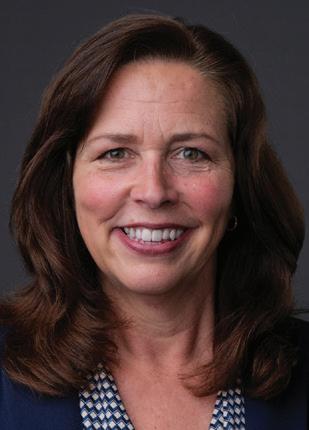
people safe. We help to give our members a place to learn the best information. That’s what we can do, what we can control.
What is ASSP’s take on the legal obligation and moral commitment to take care of workers?
That gets back to that vision and mission. We believe it’s the inherent right of every worker to have a safe workplace. That could be anywhere in the world. No matter what you do, it’s your right to be able to work safely.
I think we also have an opportunity to fill a gap that may start to exist. There are going to be things missing. I’ve heard about documents missing online already. You can look at it as an opportunity for people, who may not know us yet, but be able to rely on us to get that information.
ASSP is working on building a lot of collaborations and alliances. There’s the Intersociety Forum, a coalition of over 30 organizations, including AIHA and NSC, that have signed on. When those other things change, you have these groups that have been together for a long time and can really make a difference by standing together and sticking to the program. This is what we do. This is our organization. We help to keep
Often, a change in administration leads to a change in policies or priorities, but some organizations might not want to reverse course. After all, it takes a long time to build programs, and organizations might want to keep maturing or advancing those initiatives, regardless of how the breeze is blowing in Washington. For a long time, people in the safety world have talked about going beyond compliance. You don’t want to just
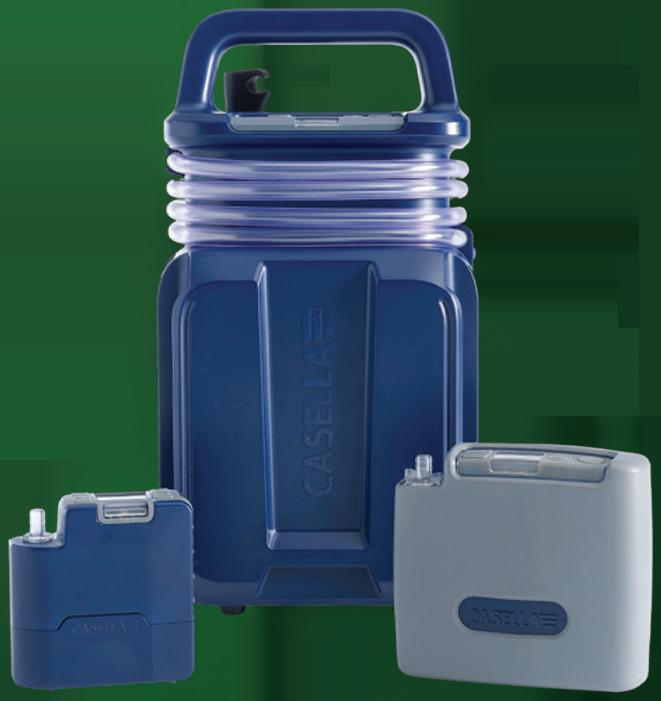
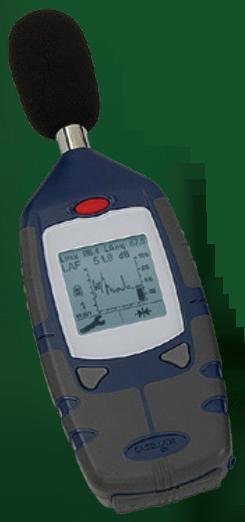


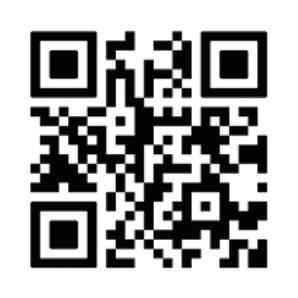
Air Sampling Pumps
High, Medium, and Low Flow Pumps
High Back Pressure
Long Battery Life, Rugged Design
Remote Monitoring Through App
Range of Workplace Monitors
Selection of Hearing Protection
Simple Operation & Rugged Design
Download & Reporting Software
For more information, please visit or contact us:
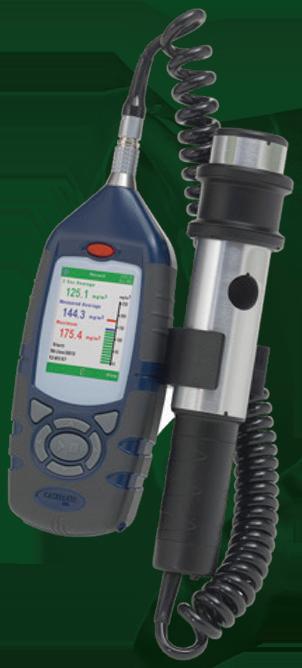
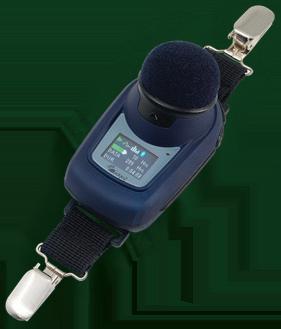
Simple Icon Driven Interface
High Measurement Range
Long Battery Life
Data Logging
Noise Dosimeters
Intrinsically Safe Models Available
Simple Operation
Remote Monitoring Through App
Multiple ‘Simulated’ Dosimeters
follow regulations. There’s management standards. There’s ANSI standards.
Everything that ASSP does goes above and beyond. I know all companies aren’t going to be as proactive. But I think a lot of companies will say ‘Even though this regulation doesn’t exist or enforcement isn’t as strong as it used to be, we can still go above and beyond. We’ll still do the right thing.’ We can support members who are taking steps to do that within their companies.
What do you think is the biggest challenge facing safety today?
I think it’s the speed of change for members. I think back to COVID days. All of a sudden, safety people had to be the COVID experts. They needed to know how to protect everybody here with design controls and things like that. Now with a lot of the new things coming up, particularly AI, it’s the same thing. Senior people expect the safety person to know AI. How should a safety person who went to school with a degree in safety know AI? Everyone’s learning at the same time.
It’s funny that you mention that because I was thinking about how change can sometimes trigger biological responses like sweaty palms. Do you have any advice for safety professionals?
I think it goes back to self-care. We talk a lot about psychological safety. Hopefully, their workplace is psychologically safe enough that they can talk to their managers, and their direct reports can come to them with their worries. I think it’s important for us to show that to our members, and for our members to show that to people that they work with as well.
[As a result of COVID], we started talking a lot more about stress in the workplace and burnout. I just hope people know that it’s not something you just have to grin and bear anymore.
Safety professionals are being asked to do more with the same amount of funding—or less. How can ASSP help those safety professionals who are out there doing the work not just survive but excel and thrive? What you’re saying is happening to a lot of occupations, honestly. I think that has been a trend for a while. People are watching budgets now more than ever. You may have less people, but you want to cover more things. It’s just really prioritizing, which I think safety people are really good at. You want to keep people safe at the end of the day. I mean that’s the bottom line. You want to have a safe place for people to work.
I also think the community aspect of ASSP helped me when I was in plants. I would just call somebody and say, ‘I need this answer. How do I do this?’ Even though you don’t have three
people working for you, you can call somebody and you get the answer. That’s back to safety people helping each other. I think this helps it be much more manageable than just trying to do it yourself. You need people to go to. If you don’t have coworkers or corporate staff to go to or corporate support, having that ASSP community can really help fill that need.
You have a lot of experience creating and delivering professional development resources. What have you learned about how people learn?
That’s what’s my last book was about. I had to do a lot of research on how people learn when they’re in the classroom. Of course, interactions have to be personalized. I think a lot of safety training in general is just ‘Here’s the content deliver it,’ but it’s got to make sense for that individual audience, so they see a way to tie it back to what they do.
When I do professional development for myself, it’s the same thing. I don’t want to read something generic. I’m constantly having to think: How does this apply to me? If you don’t, you’re not going to ever use it.
Is there something that energizes you or motivates you to get out of bed in the morning?
I really appreciate building relationships and getting to know individual members. When I was young and going to conferences, the board was always like out here [ makes an off to the side gesture with hands ]. You’d see them walking together in a different room. They weren’t really accessible.
One of my goals is to be very accessible. When I get text messages at 10 o’clock at night from members I think, ‘Why did I give out my cell number?’ [laughs] I think a lot of people know that they can just reach out to me wherever they are.
I’ve always been very appreciative of relationships and networking possibilities [with ASSP]. I could go on for days with stories about the relationships I’ve built, so I try really hard to build those, connect people with each other and build a pipeline as well.
Well said! Is there anything else you’d like to add?
I’m really excited about our board. I’m the 10th woman president of ASSP and for the first time ever, the President [Pam Walaski], president-elect and Senior Vice President [Monique Parker] are women.
When I first started, there were so few women around. I used to go to the bathroom at conferences...and put sticky notes on the mirrors saying, ‘Meet for coffee at 5 o’clock.’ That was the very beginnings of the women in safety and health group. I think the first year we did it, there might have been eight or 10 of us. The next year, there were 25.
I never saw myself as president. There weren’t many women on that stage at that time, either. I think seeing Pam, me and Monique really helps people realize, ‘Hey, I can do that, too, someday.’ EHS
For those safety professionals being tasked to do more with less while also lowering incidents and growing a culture of safety, technology is the linchpin to achieving meaningful improvement.
By David Tibbetts
In 2023, construction fatalities were at their highest number since 2011. This statistic demonstrates the need for a new approach to protecting workers. The industry has the opportunity to make 2025 a transformative year for safety. It won’t be easy. The construction industry will continue to struggle with a workforce shortage, creating a number of safety and operational challenges. However, new frameworks and technologies give organizations powerful ways to enhance their safety practices. Events that could have—but did not— result in a serious injury or fatality (SIF-p) should command more attention, and safety leaders can leverage AI-powered platforms for enhanced insight into emerging risks.
These changes can help the industry evolve beyond outdated approaches, combining cultural shifts and innovative technologies to better protect its workforce. Now is the time for action.
Total Recordable Incident Rate (TRIR) has long been a go-to metric for measuring performance and assessing risk in the construction industry. While the industry has successfully reduced recordable incident rates, the fatality rate has remained essentially flat over the last 15 years. This disparity has led the industry to recognize that focusing on recordable incidents, while valuable, does not paint a complete picture of risk.
Contractors can maintain a strong safety record, as demonstrated by a low recordable rate, yet still experience near misses and significant exposures that put workers at risk. While incidents like a minor cut requiring a few stitches are consistently investigated, the reality is that a more serious exposure, such as a worker using inadequate fall protection, is not.
Traditionally, site leadership corrects such exposures or near misses in the field but does not track or evaluate them with the same diligence as minor recordable incidents. Events with the potential to result in a serious injury or fatality represent a significant opportunity to learn, improve and reduce fatality rates over time.
2025 must bring an industry-wide shift in how we think about safety metrics and measure safety performance.
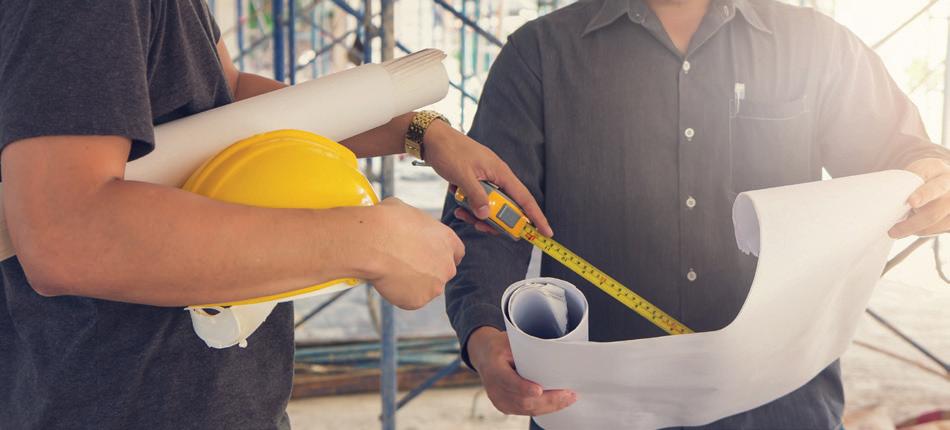
Organizations should evaluate SIF-p events with the same level of attention as recordable incidents. By systematically tracking and investigating all SIF-p events, organizations can better understand the factors that contributed to the event, including the identification of opportunities to improve planning, training and execution. Leaders may also uncover gaps in programs and management systems.
The move to SIF-p tracking hinges on building a culture where workers feel empowered to report near misses and potential risks without fear of blame. Leaders must set the tone to make safety a shared responsibility across the organization. This requires creating an environment where workers recognize that reporting contributes to safety. Leaders can reinforce this message by acting on reports, sharing lessons learned, and celebrating individuals and teams who speak up. When workers understand that identifying these events can prevent serious injuries or fatalities, employee participation becomes a cornerstone of a proactive safety culture.
This approach enables organizations to begin aggregating data around SIF-p events, identifying emerging trends and taking action to reduce exposures and prevent serious incidents from occurring. This shift toward measuring and learning from SIF-p events represents a promising development in the ongoing effort to improve worker safety. Companies that successfully implement this new safety framework will reduce serious incidents, while those that rely on outdated approaches will continue to have exposures that threaten worker health and well-being.
The workforce shortage will emerge as a defining safety challenge of 2025, fundamentally testing the industry’s ability to deliver increasingly complex capital projects safely. According to the Associated General Contractors of America, over threequarters of contractors face challenges filling open positions.
This labor shortage isn’t just about filling roles—it’s about retaining the knowledge and experience that keep jobsites safe. Many project managers and superintendents are leaving the workforce, taking decades of expertise with them. Eight in 10 surveyed contractors believe the lack of skilled, experienced workers poses a safety risk. The National Institute for Occupational Safety and Health reports that first-year employees accounted for nearly half of all construction injuries.
Additionally, staffing challenges can put pressure on teams as they work to meet aggressive deadlines, potentially at the expense of thorough onboarding and effective training. The quality of the work delivered can also suffer as a result of insufficient staffing and a lack of worker experience. The need to perform rework introduces and increases safety risks as schedule pressures increase, work environments change and available resources potentially decrease.
To overcome these challenges, organizations must invest in building strong safety cultures that prioritize mentorship and training. Pairing inexperienced workers with seasoned professionals becomes a critical strategy for transferring knowledge and ensuring that new hires develop the ability to recognize hazards and understand how to take appropriate action.
As part of the safety culture, project teams must make responsible choices about the type and amount of work they take on in the face of this shortage. Companies must carefully consider their ability to staff each project with management, supervision and skilled workers.
By focusing on safety, training, employee onboarding and continued support, companies can build resilience and thrive— even with reduced staffing and a less experienced workforce.
Experts forecast that AI in the construction market will more than quadruple by the end of the decade, from $2 billion to $8.4 billion. Using this technology in construction is primarily about improving processes, delivering actionable insights and enhancing decisionmaking. It supports human expertise rather than replacing it.
Worker safety, in particular, stands to significantly benefit from AI adoption. These tools support projects from preconstruction through project completion, including during on-site operations.
AI-powered solutions enhance contractor prequalification processes. AI can assess a contractor’s risk by analyzing many different data sources, including safety records, quality metrics, performance data and financial documents.
The technology’s value extends beyond analyzing lagging indicators. General contractors (GCs) and project owners can also evaluate leading indicators, including safety programs, safety management systems and behavioral data.
By automating the review of safety manuals, procedures and pre-task planning documents, AI empowers GCs and owners to efficiently identify gaps, assess quality and ensure compliance with standards. Safety teams can focus on engaging with potential contractors to address concerns using a collaborative risk mitigation approach. Knowing a partner’s strengths and weaknesses supports effective project planning.
AI is particularly valuable for continuous monitoring and risk assessment. Construction projects generate enormous amounts of data that can be difficult for project teams to effectively analyze while managing their day-to-day responsibilities. AI systems can monitor multiple data streams to identify risk patterns and alert teams to projects showing increased risk indicators.
As the construction industry adopts more AI tools, onsite inspection quality and value will improve. Traditional approaches to conducting inspections often fall short as inspectors fail to focus on the most critical risks. Inspections done solely by human inspectors are limited by time, resources and the sheer scale of dynamic job sites.
AI-powered systems that continuously record jobsite data—from worker movement patterns to equipment usage logs to environmental sensors to incident reports—can identify patterns, unsafe conditions or deviations from safety protocols that might escape human observation. When project teams begin their day with AI-generated insights, inspectors will be directed toward the most relevant risks, ensuring their expertise is applied where it matters most. The real-time nature of this data enables a proactive safety approach and continuous improvement throughout the project life cycle.
While technology can identify a hazard, it’s the human interactions—like addressing unsafe behaviors, implementing controls, communicating processes or praising workers for a job well done—that improve safety. No matter how advanced technology gets, effective safety programs require human leadership.
As 2025 unfolds, successful companies will recognize safety as more than a compliance metric; they will see it as an opportunity to innovate, lead and protect. By addressing workforce challenges through a safety-focused culture, adopting SIF-p tracking and leveraging AI, the construction industry can enhance project success while building a safer future for its workers. EHS

David Tibbetts is a Certified Safety Professional and Chief Safety Officer at Highwire.
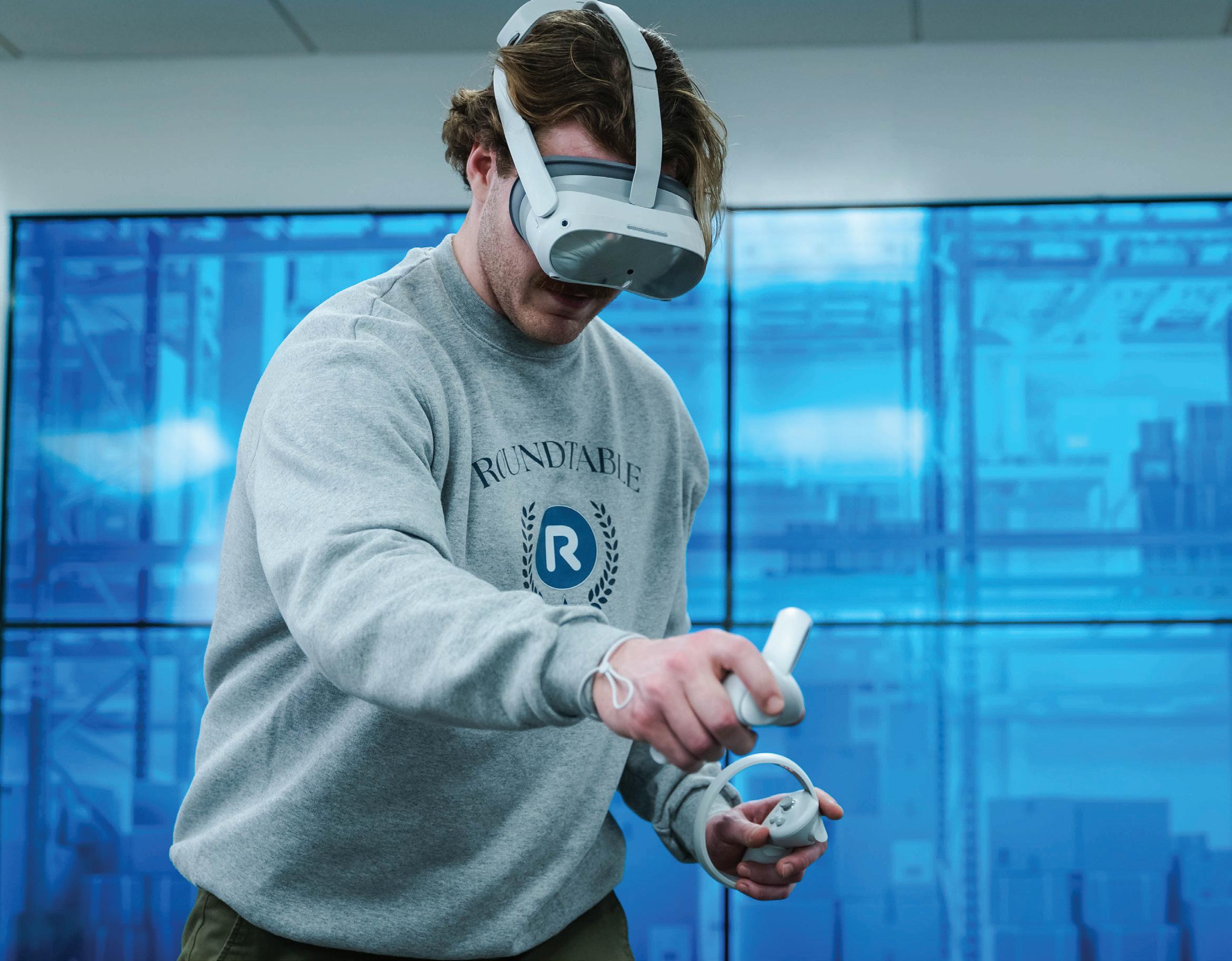
New technologies provide hands-on ways to safely train employees without slowing down operations.
By Adrienne Selko
Debates about the close integration between technology and workers are ongoing. However, in the training sector of the safety industry, the two are getting along just fine.
The key to this happy relationship is based on the increased processing power of emerging technologies, which enable more lifelike simulations. These simulations of job tasks help workers master the skills necessary to properly perform the job before the actual work begins, thus preventing injuries.
Pushing the envelope further, machines are being outfitted with technology that is able to determine if proper training methods are being implemented and then being able to act upon that data.
Let’s start with virtual reality, which is catching on quickly as hardware has improved and prices have decreased. Virtual reality (VR) creates a simulated three-dimensional environment that allows users to interact with it, using a headset, which makes the situation feel real. “We introduced virtual reality around eight years ago, as we needed to accelerate training and onboard operators quickly,” says Shannon Curtis, senior manager technology solutions and marketing at the Raymond Corporation, a manufacturer of lift
Virtual reality simulations can provide a safe space to practice technical, hands-on work. ROUNDTABLE LEARNING
trucks and material handling vehicles. “It has been very wellreceived and successful.”
New methods of training are being adopted as both the jobs and makeup of the workforce are shifting. “The field has changed,” notes Curtis. “I explain it this way: Instead of steel-toe shoes, people are now working in tennis shoes and shorts. The environment has changed and involves e-commerce and light picking, so we are seeing different demographics of people who are entering the field. For example, we have more people who are working second and third shifts while going to school.”
Many of these new employees do not have prior experience in warehouses so ensuring that they are properly trained in their first year is essential. OSHA has reported that new employees are five times more likely to get injured than more seasoned workers.
“When it comes to manufacturing and warehousing, you’re dealing with high-risk, technical roles where long rampup times and safety issues just aren’t an option,” explains Nick Day, vice president of sales and client solutions at Roundtable Learning, an immersive education company. “XR [extended reality, which includes VR] gives teams a handson way to train without slowing down operations or putting
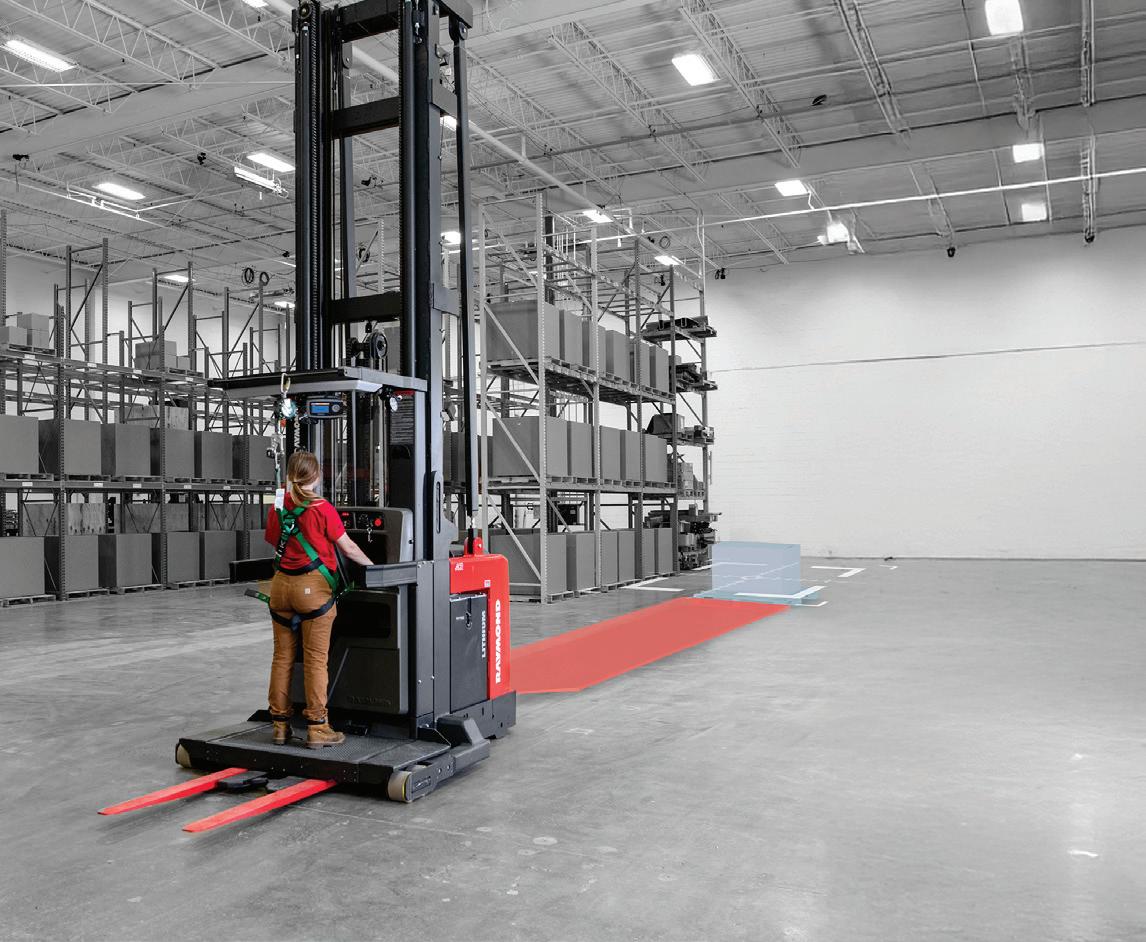
anyone in harm’s way. It’s faster, safer and significantly more cost-effective.”
Gina Godeen, a former safety manager in the construction, mining and manufacturing industries, and now an editor at J.J. Keller & Associates Inc., a provider of safety and compliance solutions, has found that to be true. “Hands-on training coupled with visual training is more effective, especially being able to demonstrate hazards in a controlled environment,” she says. “This is especially important in confined spaces and lockout/tagout training.”
Moving technology to machinery is the next step in safety training. The machinery is equipped with technology that can reinforce training by alerting operators to safety protocols. And even more importantly, the machine can take an active role if proper operating steps are not present.
One example is that of tethering. Raymond has designed an integrated wireless solution that limits a lift truck operation if a proper connection is not detected between a self-retracting lanyard and an operator’s harness. “This technology can make sure that operators don’t forget to tether,” says Curtis. “With increased pressure on productivity, an operator might forget this step. The machine is programmed to detect this and will issue visual and audio warnings. After that, if the harness is not properly connected, the lift truck will limit travel speed and disable lift capability.”
Another technology Raymond is using, which was designed to reinforce operator training, is an object detection system that issues both audible and visual notifications of objects within a lift truck’s travel path. When an object is sensed, using LiDAR technology, lift trucks can be brought to a controlled slowdown or stop, in or outside the aisle, consistent with the facility’s rules.
“This machine-assist technology makes sure that a worker can’t have a mishap,” says Curtis. “From the data we receive from the machine, we can spot behavior. For example, if a lift truck is making frequent stops, it could mean that the operator needs to be retrained, or the area could be too congested, and a new layout is necessary.”
Forklift safety is a major concern for manufacturing companies. In fact, one of the largest U.S. retailers approached Roundtable Learning for assistance in improving forklift safety within their facilities. The company was seeing an increase in the number or recordable incidents and even a death.
Here are a couple recent success cases that demonstrate the value in VR-enabled safety training.
• A company in the aerospace manufacturing industry saved over $1 million in annual losses related to CNC accidents.
Prior to implementing the VR training program, the company experienced an average of 10 accidents per year, each costing approximately $110,000, totaling over $1 million in annual losses. Since the VR training was introduced 12 months ago, the company has reported zero spindle crashes, attributing this improvement directly to the effectiveness of the training program.
• A Fortune 500 company with distribution centers across the nation saw its turnover rate reduced by 70% by implementing VR training as part of its job preview and onboarding process for decanters.
The company also saved 7,800 management-level work hours by offloading the bulk of training to two solo sessions in VR.
Part of the problem was the high rate of turnover, which puts a strain on training. “Using VR, new employees could become proficient at the task prior to ever stepping on a forklift,” says Day.
And as Raymond found, the data from this retailer’s training allowed for further analysis. “We can now take advantage of trends that we are seeing based on the data we gather. For this retailer, we did a common trend analysis to find out what the facilities were getting wrong and doing right, and we couldn’t have done in the past. That’s a huge win to have that level of insight.”
In most industries, but especially in manufacturing and logistics, new employees are not always sure what their job entails, and this often leads to high turnover. Having a way to demonstrate the job



requirements prior to accepting a position is a valuable tool that VR offers.
“We have customers that use VR as a pre-screen,” explains Curtis. “Training and onboarding are the most expensive parts of bringing someone into a company. To provide training and then not have long-term employment is expensive. VR training minimizes this.”
And the expense of training is always an issue when companies determine their overall budget. “The next step for the safety industry is to find a way to break through the barrier of not prioritizing safety in the budget,” explains Godeen. “While technology and products have come a long way in our industry, there is still an issue with allocating the necessary resources for safety and having that safety-first mindset.”
But when companies have a safety-first mindset, employees appreciate it. “We recently rolled out a program for one of the largest online retailers, and our team was on-site taking some seasoned folks through the training, and there was a gentleman who started tearing up seeing the evolution of training. He explained that now he would be able to show his colleagues what to do and why and keep them safe.” EHS

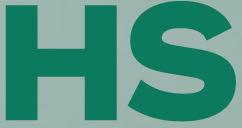




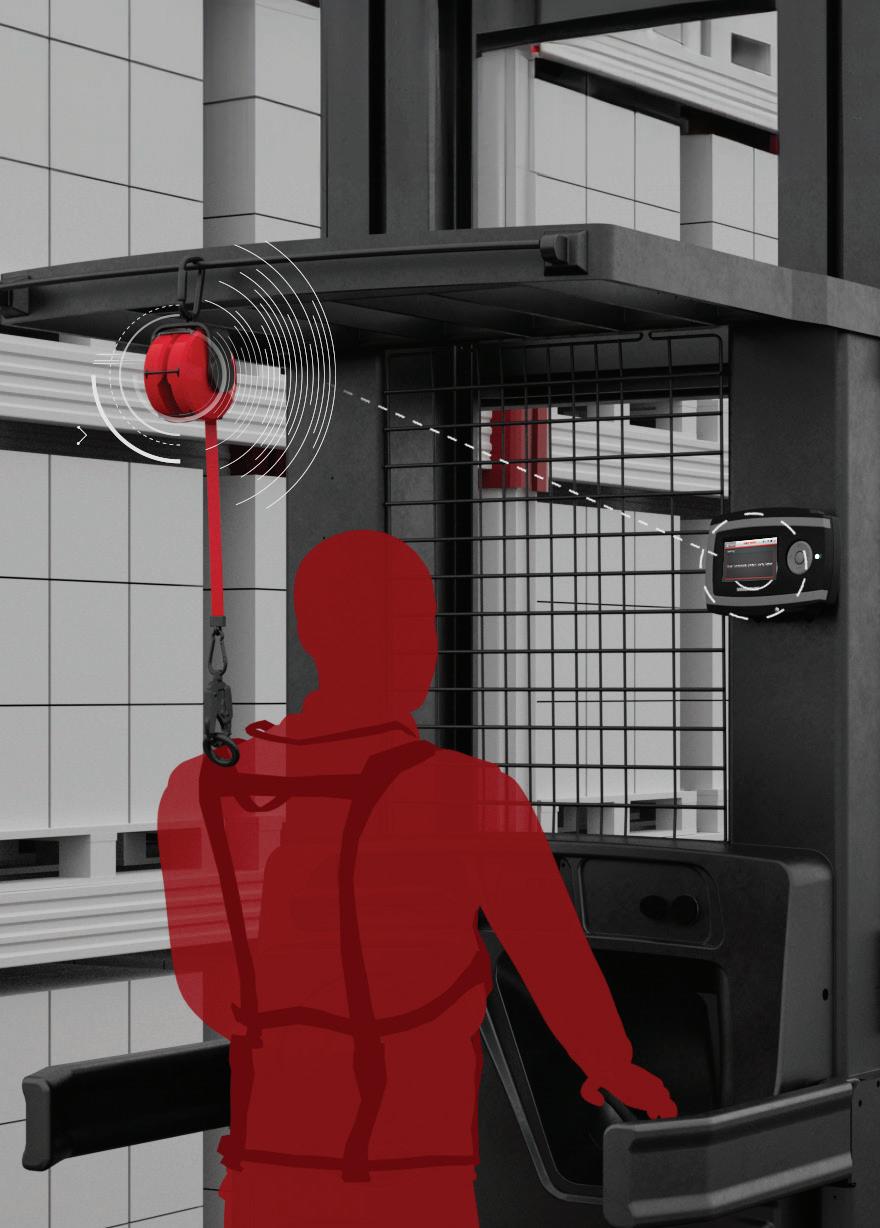

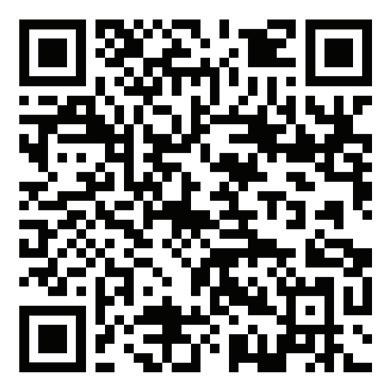





Comprehensive training and a robust safety culture are key to preventing electrocution risks in manufacturing settings.
By Randy Dombrowski
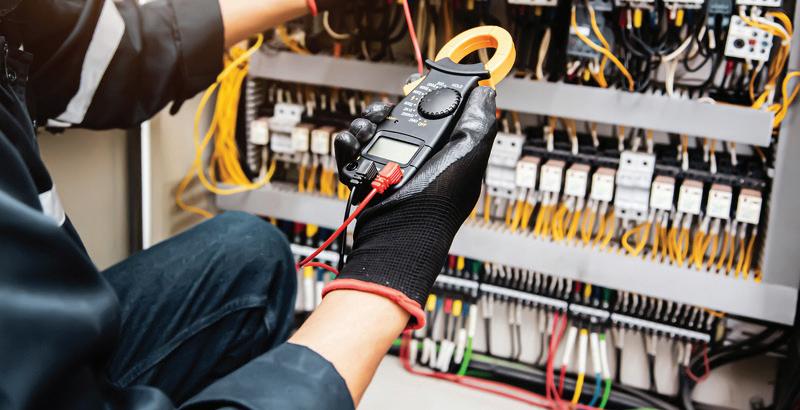
Electrical hazards are one of the most dangerous and often overlooked risks in manufacturing. Many workers assume that factory and productioncontrolled environments, established protocols, and modern equipment eliminate the possibility of electrocution from high-voltage equipment. However, data proves otherwise.
The manufacturing industry is among the top five industries with the highest number of electrical fatalities. According to the Electrical Safety Foundation International (ESFI), 74% of workplace electrical fatalities occur in non-electrical occupations, indicating that workers outside of traditional electrical roles face significant risks. Additionally, 28% of all workplace electrical fatalities take place on industrial premises, reinforcing the need for heightened safety awareness in manufacturing environments.
Electrocution incidents in manufacturing often occur unexpectedly due to heavy voltage equipment and arc flash injuries. Arc flashes, which are sudden releases of electrical energy through the air due to a fault, can result in severe burns, neurological damage, and fatalities. These incidents often are caused by improper procedures, lack of training and PPE usage, and unauthorized personnel interacting with electrical systems.
Beyond the human impact, electrical incidents can result in significant financial and reputational consequences for businesses.
The BLS reported 2.6 million nonfatal workplace injuries and illnesses in 2023 (the latest data available) with more than 900,000 cases leading to time away from work. These disruptions hinder operations, lower productivity, and drive insurance costs higher, making proactive safety measures essential for maintaining efficiency and financial stability in manufacturing environments.
A 2024 industry report revealed that many manufacturing employees feel unsafe due to inadequate safety training and outdated procedures. This signals a pressing need for leadership to address training gaps and reinforce electrical safety measures as soon as possible.
The reality is that most electrocution accidents are preventable. When organizations and workers disregard or aren’t trained on proper safety protocols, they expose themselves to unnecessary risks. It’s the responsibility of leadership to create and enforce a culture of electrical safety by implementing industry best practices that include proper training and firm adherence to safety regulations.
Electrical safety in manufacturing extends beyond compliance with regulations; it requires a proactive, company-wide commitment to safety. Risks can be significantly minimized when workers at all levels understand proper procedures, are encouraged to take action, and follow established safety protocols. In addition, many insurers offer risk management programs designed to evaluate safety procedures, identify hazards, and recommend necessary training improvements across your manufacturing production environment.
Building a culture of electrical safety involves a structured approach that includes training, employee empowerment, daily reinforcement, and access to control measures. Below are four key steps to ensuring a safe manufacturing environment.
Comprehensive safety training is one of the most effective ways to reduce electrical accidents. A single, one-time training session is insufficient; instead, ongoing and updated education is necessary to ensure employees stay informed about the latest safety protocols.
Ongoing Training: Electrical safety training should be an ongoing process, with regular refresher courses to address emerging risks and reinforce best practices. Companies should incorporate annual safety assessments to identify training gaps and make necessary updates.
Focus on New Employees: New employees are particularly vulnerable to workplace injuries. Data shows that workers in their first month on the job are over four times more likely to have a lost-time claim due to injury than workers there over one year, and 28% of workplace injuries occur among employees with less than one year of service. Since newer workers may not be fully aware of the electrical hazards on the jobsite or with the equipment, targeted onboarding programs can help reduce risk.
Lockout/Tagout (LOTO) Training: LOTO procedures prevent equipment from being powered on during maintenance. Improper use of LOTO is a major contributor to electrocution incidents. Regular training on how to properly apply and follow LOTO procedures can prevent fatal mistakes in manufacturing environments.
One of the most overlooked aspects of workplace safety is ensuring that staff feel comfortable reporting hazards. Many workers hesitate to raise concerns about safety due to fear of retaliation or lack of confidence that their concerns will be addressed.
Encourage Open Communication: Manufacturing leaders should establish open communication channels, such as anonymous reporting systems or safety meetings where employees can voice concerns without fear of consequences.
Promote a No-retaliation Policy: Workers should be assured that raising safety concerns will never lead to disciplinary action. Encouraging workers to report unsafe conditions or near-misses allows organizations to take corrective action before an accident occurs.
Daily reinforcement of electrical safety through communication, training, and leadership involvement can make a significant difference in reducing risks.
Daily and Weekly Safety Briefings: Holding brief safety meetings at the beginning of shifts keeps electrical hazards top of mind and allows employees to discuss any potential or observed risks.
Signage and Visual Reminders: Clear safety signs near high-voltage areas, electrical panels, and breaker boxes can remind workers of potential hazards and proper procedures.
Leadership’s Role in Safety: Managers and supervisors should actively demonstrate safe behavior by following protocols and using personal protective equipment (PPE) when necessary. Employees are more likely to take safety seriously when they see their leaders prioritizing it.
Many electrical accidents in manufacturing occur due to unauthorized or improper interactions with electrical systems. Strict access controls and safety measures will reduce risks.
Restrict Access to Electrical Equipment: Only trained and authorized personnel should have access to electrical panels, breaker boxes, and high-voltage machinery. Limiting access prevents untrained staff from making mistakes and causing accidents.
Prevent Unsafe Resetting of Breakers: Electrical incidents can happen when workers reset breakers without first identifying the cause of the issue. Electrical faults should be diagnosed by qualified personnel before resetting any circuits.
Address Arc Flash Risks: Studies indicate that improper maintenance, lack of PPE, and failure to deenergize equipment contribute to arc flash incidents. Strict enforcement of safety gear usage and proper deenergization procedures can mitigate these risks.
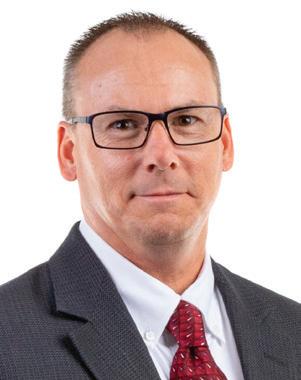
Enforce LOTO Compliance: Ensuring that workers adhere to proper lockout procedures can prevent machinery from being accidentally energized during maintenance. EHS
Randy Dombrowski is the Director of Safety Services for Sentry Insurance.




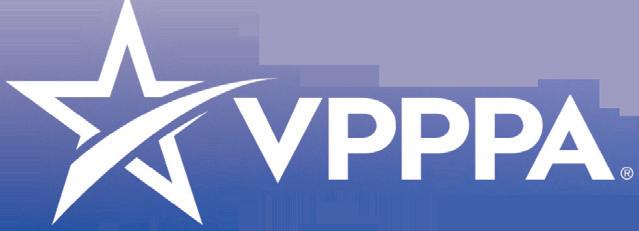
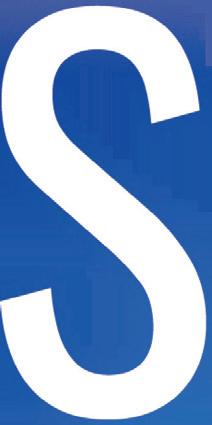
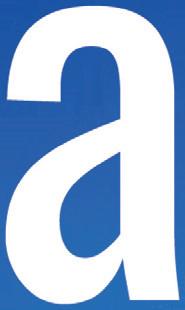

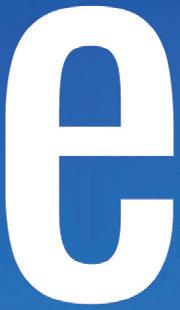

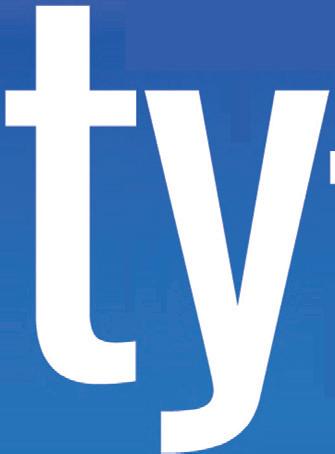


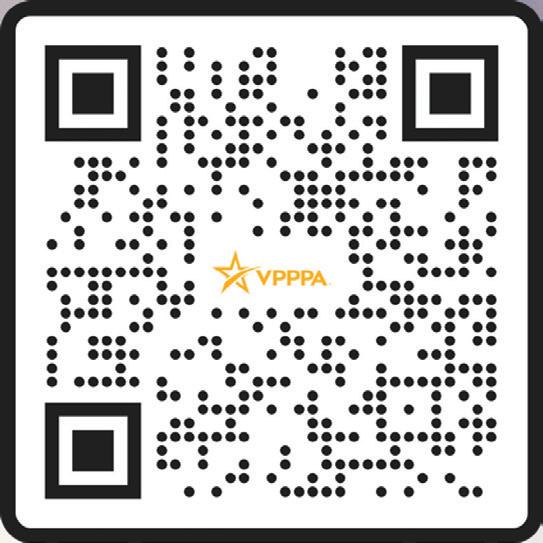











2 Summit Park Drive, Suite 300 | Independence, OH 44131 Telephone: (234) 466-0200 www.ehstoday.com
John DiPaola, VP & Market Leader, Manufacturing Group jdipaola@endeavorb2b.com
Sam Schulenberg, Production Manager sschulenberg@endeavorb2b.com, (734) 887-6915
Terry Gann, Ad Services Manager tgann@endeavorb2b.com, (323) 763-7397
Frank Chloupek, Group Director, User Marketing and Product Analytics fchloupek@endeavorb2b.com
ADVERTISING SALES
Jim Philbin, Regional Manager, US & CANADA jphilbin@endeavorb2b.com, (773) 332-6870
Joe DiNardo, Regional Manager, MICHIGAN & OHIO jdinardo@endeavorb2b.com, (440) 487-8001
INTERNATIONAL SALES
Yoshinori Ikeda, Japan 81-3-3661-6138, Fax: 381-3-3661-6139
Diego Casiraghi, Italy diego@casiraghi-adv.com, 39-031-261407
Adonis Mak, China and Hong Kong adonism@actintl.com.hk


EDITORIAL STAFF
Dave Blanchard Editor-in-Chief (941) 208-4370 dblanchard@endeavorb2b.com
Adrienne Selko Senior Editor aselko@endeavorb2b.com
Nicole Stempak
Managing Editor (682) 257-3371 nstempak@endeavorb2b.com
David Sparkman
Contributing Editor dspark@comcast.net
Kermit Mulkins Art Director
Robert Schoenberger
Editorial Director, Manufacturing Group rschoenberger@endeavorb2b.com
Travis Hessman VP, Content thessman@endeavor2b2.com
Mark S. Dreux, ArentFox Schiff LLP
Fay Feeney, CSP, ARM, Risk for Good Jeff Fernandez, Ph.D., PE, CPE, JFAssociates Inc.
Edwin Foulke, Fisher Phillips
Mark A. Friend, CSP, Embry-Riddle Aeronautical University
Richard D. Fulwiler, Sc.D., CIH, CSHM, Transformational Leadership Associates
Carl W. Heinlein, CSP, OHST, STS, American Contractors Insurance Group
James A. Lastowka, Ogletree Deakins
Zack Mansdorf, Ph.D., CIH, CSP, QEP J.A. Rodriguez, CSP, Make My Day Strategies
Cynthia L. Roth, Ergonomic Technologies Corp.
Kathy A. Seabrook, CSP, Global Solutions
James Swartz, InterContinental Hotels Group
Charles Yang, Taiwan medianet@ms13.hinet.net, 886-4-23223633

ARTICLE SUBMISSIONS: EHS professionals and managers are invited to submit articles for possible publication. Articles must be submitted on an exclusive basis and are subject to editing. Contact: dblanchard@endeavorb2b.com.


ENDEAVOR BUSINESS MEDIA
CEO Chris Ferrell
COO Patrick Rains
CRO Paul Andrews
CDO Jacquie Niemiec
CALO Tracy Kane
EVP, Design & Engineering Group Tracy Smith
EVP, Endeavor Business Intelligence Paul Mattioli
SUBSCRIPTION RATES 1 Year 2 Years Per Copy Group (5+ copies)
CUSTOMER SERVICE: For all customer service inquiries, call (847) 559-7598 or (877) 382-9187. For paid subscriptions, send payment: PO Box 3257, Northbrook, IL 60065-3257. Customer Service Information: PO Box 3257, Northbrook, IL 60065-3257. E-mail: ehstoday@ omeda.com. Canada return address: The Mail Group, PO Box 25542, London, ON N6C 6B2 Canada.
REPRINTS/PERMISSIONS: Contact Endeavor Business Media to purchase quality custom reprints or e-prints of articles appearing in this publication at reprints@endeavorb2b.com.
PHOTOCOPIES: Authorization to photocopy articles for internal corporate, personal, or instructional use may be obtained from the Copyright Clearance Center (CCC) at (978) 750–8400. Obtain further information at copyright.com.
ARCHIVES: This publication is available for research and retrieval of selected archived articles from leading electronic databases and online search services, including Factiva, LexisNexis and ProQuest.
LIST RENTAL: Jim Philbin, jphilbin@endeavorb2b.com, (773) 332-6870.
PRIVACY POLICY: Your privacy is a priority to us. For a policy statement about privacy and information dissemination practices related to Endeavor, contact our Corporate Office.
CORPORATE OFFICE: Endeavor Business Media, 30 Burton Hills Blvd., Suite 185, Nashville, TN 37215, U.S., www.endeavorbusinessmedia.com. Copyright © 2025 Endeavor Business Media. All rights reserved.
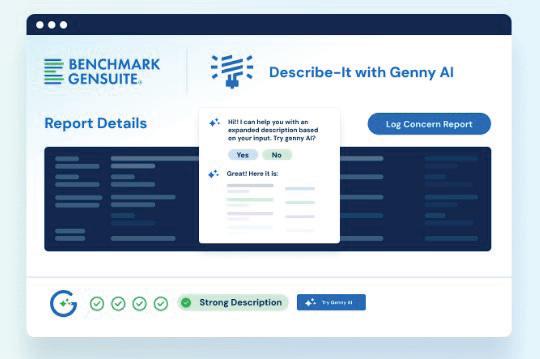
Benchmark Gensuite has expanded its generative artificial intelligence (GenAI) offerings with a suite of offerings to streamline EHS tasks. This includes: Describe It AI’s writing assistance tool to improve the quality and efficiency of frontline data capture for tasks such as incident management, inspections and audits, and hazard reporting. Gen AI OCR (Optical Character Recognition) to extract information from safety data sheets and auto-populate data info forms, reducing manual entry. Suggestion AI to receive tailored recommendations in real-time for corrective actions. Gen AI Image Analysis to write descriptive analyses of images. Benchmark Gensuite www.benchmarkgensuite.com
DuPont has launched a new, lightweight coverall for workers in industries or applications that require multi-hazard protection. The Tychem 6000 SFR is designed to provide at least 30 minutes of protection from more than 250 chemicals and offers secondary flame resistance when worn over primary flame resistant (FR) garments. The coverall’s garment design features a respirator-fit hood with covered elastic face opening, taped seams and double storm flap closure with double-sided adhesive tape. The coveralls have covered elastic at wrist and ankle openings and elastic at sides of waist for a secure yet comfortable fit. DuPont www.dupont.com
AD INDEX
ADVERTISER PAGE # WEBSITE
Advance Lifts, Incorporated 10 advancelifts.com
Casella Holdings Limited 21 www.casellasolutions.com
Fortune Brand Innovations 7,BC www.fbin.com
Industrial Scientific Corp IFC www.indsci.com
Lehigh CustomFit IBC www.customfit.me
Lion Technology Inc 32 lion.com/ehstoday
Mechanix Wear 5 www.mechanix.com
Uline 4 uline.com
VPPPA 30 safety.vppa.org
Wooster Products Inc 29 www.woosterproducts.com


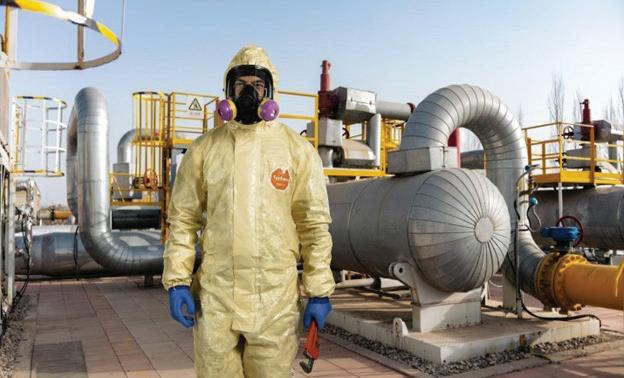
Airgas has created a new line of personal protective equipment specifically designed for women in the welding industry. The RADNOR line features a range of products, from gloves to welding jackets—all designed to help women stay safe with products focused on their specific fit, function and style needs. Airgas www.airgas.com


For more new products, visit newequipment.com















Empowering Safety Professionals to Become Tomorrow's Safety Leaders



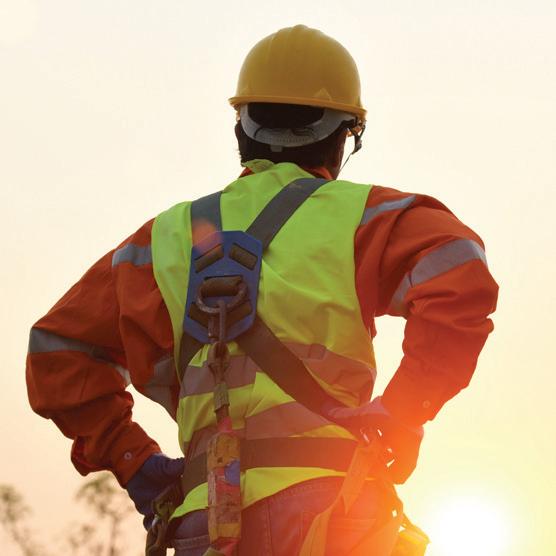













































OCTOBER 20-22, 2025
Renaissance Phoenix Glendale Resort & Spa | Phoenix, Arizona



Safety professionals have an opportunity—and an obligation—to make a meaningful difference.
For the past two years, I pretty much read only one genre.
I hadn’t even realized it until I picked up a book that received a rave review from The New York Times. It was unlike anything I had ever read before and way outside my comfort zone; it was just what I needed.
That book prompted me to intentionally shake up my reading habits. I wanted to challenge myself, expand my understanding and stretch my horizons rather than simply read for entertainment or escape. So far this year, I have read science fiction, self-help, historical fiction, history, memoirs, business, international literature and plenty of fiction.
Even so, all these books share a common thread: These works of fiction and nonfiction have afforded me a new perspective and a better appreciation for my surroundings, Mother Nature and my fellow man.
The experience reminds me of To Kill a Mockingbird, specifically the scene when Scout sees her neighborhood from a new vantage point: “Atticus was right. One time he said you never really know a man until you stand in his shoes and walk around in them. Just standing on the Radley porch was enough.”
Encouraged both by my recent reading endeavors and the kind words I received from my previous column on caring, I sought to learn how workplace safety programs could be more neurodiverse friendly.
Eventually, I discovered that John Dony and Sarah Ischer of What Works Institute were a giving a presentation on this very topic at the American Industrial Hygienist Association’s conference, AIHA Connect. I reached out, eager to learn more.
The term neurodiversity was coined in the late 1990s to describe the differences in how people’s brains think, learn, perceive and process information. Neurodiversity is an umbrella term that includes people who have been diagnosed with autism spectrum disorder, ADHD, dyslexia, dyspraxia, dyscalculia or another learning disability.
Studies estimate that 15% to 20% of today’s workforce is
Nicole Stempak Managing Editor

neurodiverse, but Dony says safety professionals shouldn’t wait to act until they meet someone who is neurodiverse or an employee requests an accommodation.
“If we waited for any other risk factor to activate in front of us—if that were the only time we were going to take action, to do something about it, or prevent it, then we’d be waiting for fires to happen before we did anything,” he says. “We’d never build a fire suppression system.”
Dony acknowledges that safety professionals might be overwhelmed with their current workload or reticent to do more, especially when it involves mental health or psychosocial risk. But what if we approach building a more neurodiverse friendly workplace the same way that we view ergonomics? That is, we looked for ways to adjust the work to best suit the person.
Seen that way, safety professionals who create more neurodiversity-friendly workplaces are just doing what they’ve always done: protecting workers. A good safety professional is always trying to bring out the best in all their employees, protect them or help them however they need it. This need not be expensive, but it does require asking questions and listening.
My conversation with Dony, which you can listen to on the Talking EHS podcast, offered me a new way to view interpersonal communications, safety training, personal protective equipment and more. The part that excites me the most is how creating a more neurodiversity-friendly workplace is another step toward building a stronger, more welcoming and more inclusive culture for all.
“If the organization is paying attention to its culture and the way it thinks about psychological safety or psychosocial risk, that’s absolutely going to benefit everyone,” Dony says. He should know, both as someone who has spent over 17 years in workplace safety and as someone who identifies as neurodivergent.
Safety professionals such as yourself are in a position to regularly walk around in someone else’s shoes. You can learn from, and connect, with others. You have also been given a rare gift: the opportunity to lessen someone else’s burdens.
I look forward to hearing how you have made someone else’s life better.

Send an e-mail with your thoughts to nstempak@endeavorb2b.com.





Amplify Productivity











Personal employee 3D foot scan data recommends work shoe fit more accurate than in-store try-on
▪Injury & Fatigue Prevention
▪ Reduced MSD & RSI Claims
▪ Reduced Absenteeism






















































▪Greater Protection, Performance & Productivity


▪No inventory or size restrictions
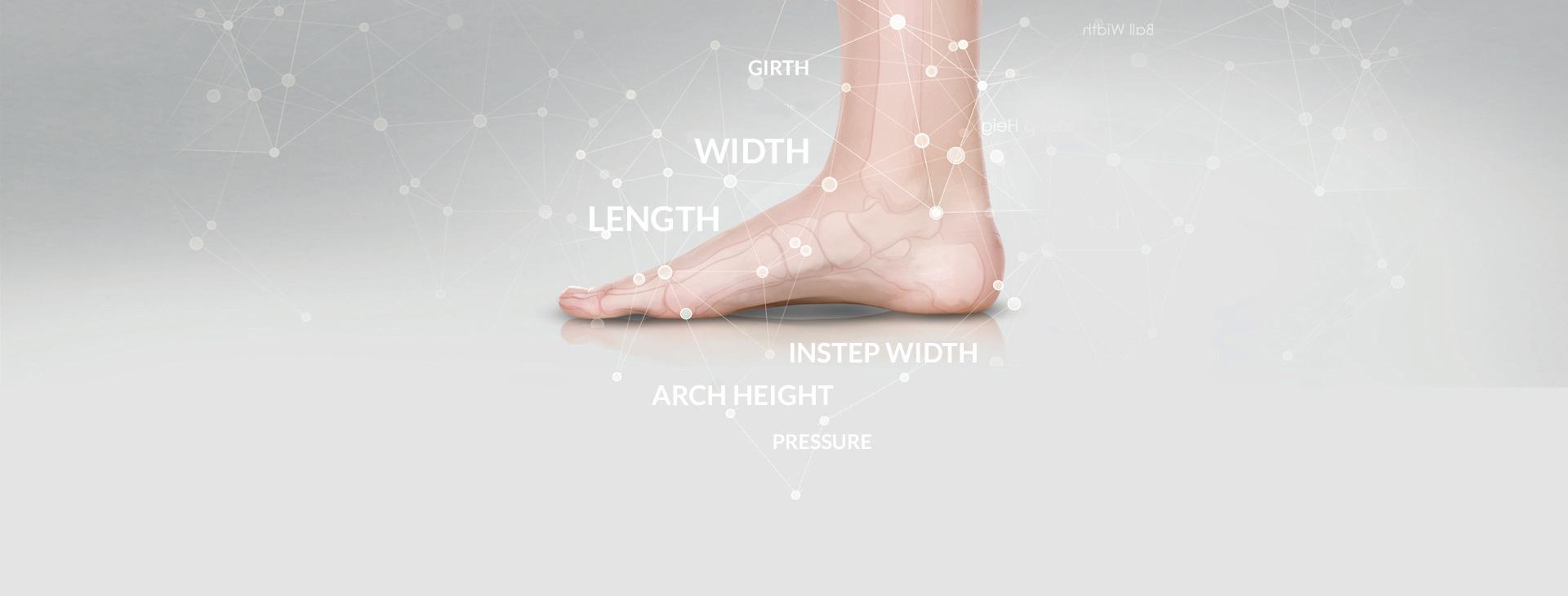


Huge Selection of Safety Footwear


▪75+ brands, 1000s of styles + women’s-built options

Simplfy Compliance with





▪ 24/7 availability from any device at employee convenience





























Online dashboard to see & control eligibility, prove compliance, track spend, budget & plan

























▪Greater options increase employee satisfaction, compliance and pain-free fit


























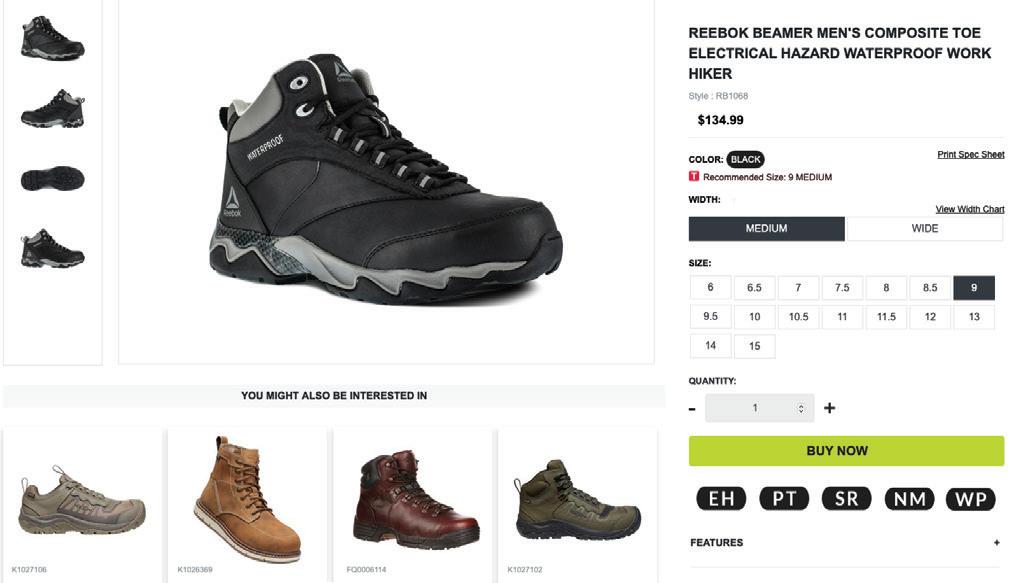
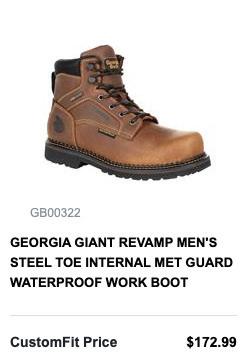










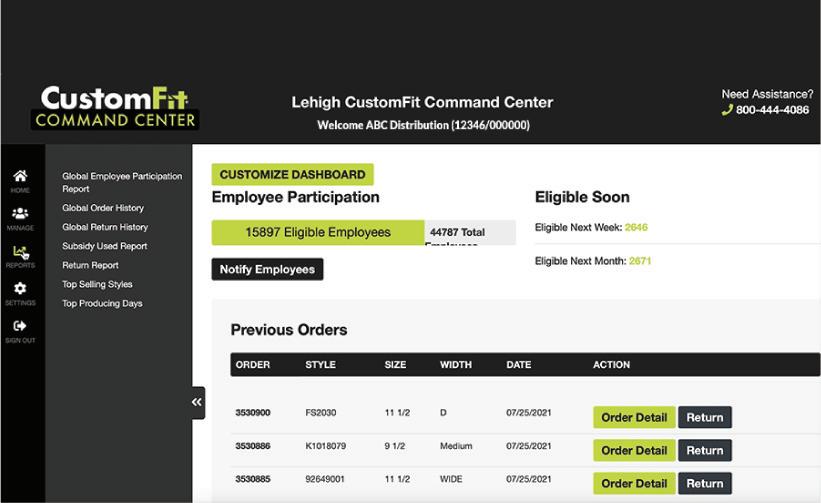





































































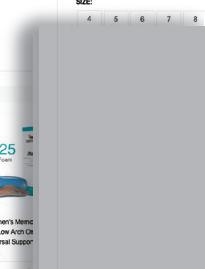






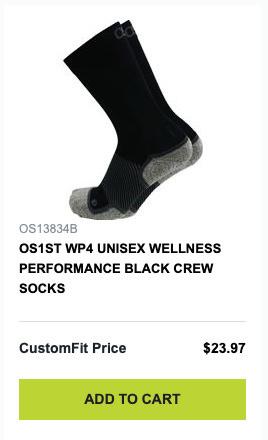















MEET THE NEW MASTER LOCK cLOTO™
Track safety procedures, reduce human error and empower your team in real time with our new, technology-based lockout tagout solution.

SAFETY LEADERSHIP CONFERENCE, BOOTH 1515
